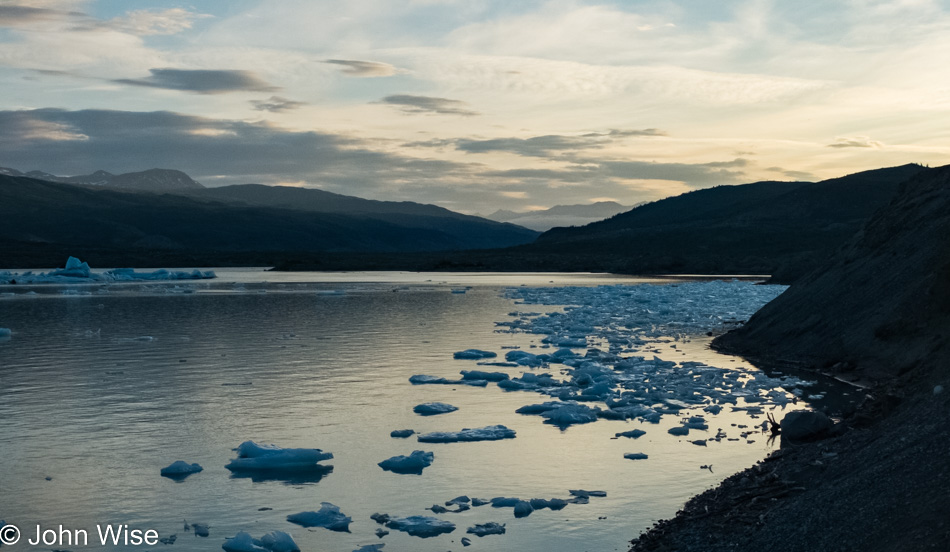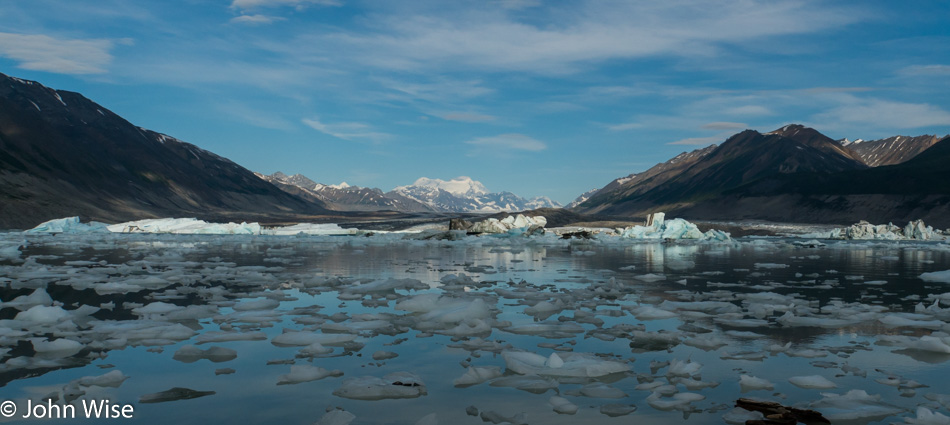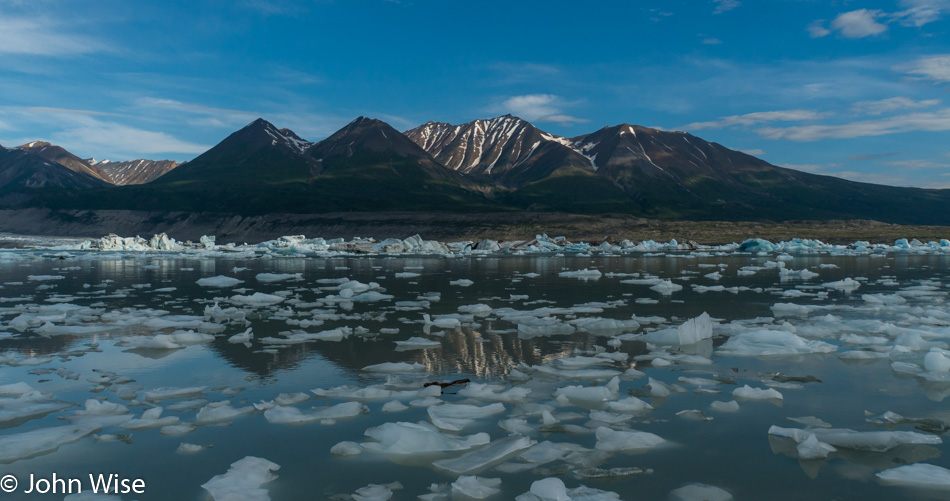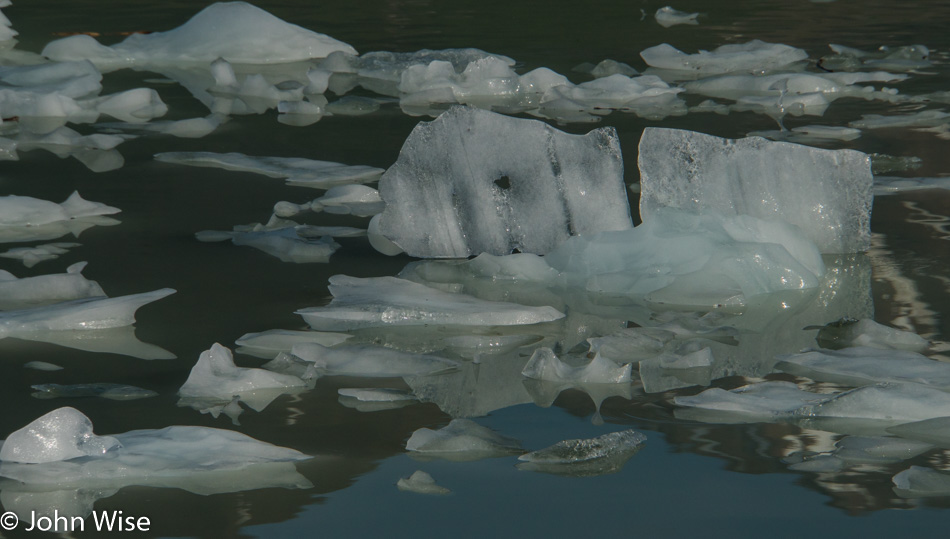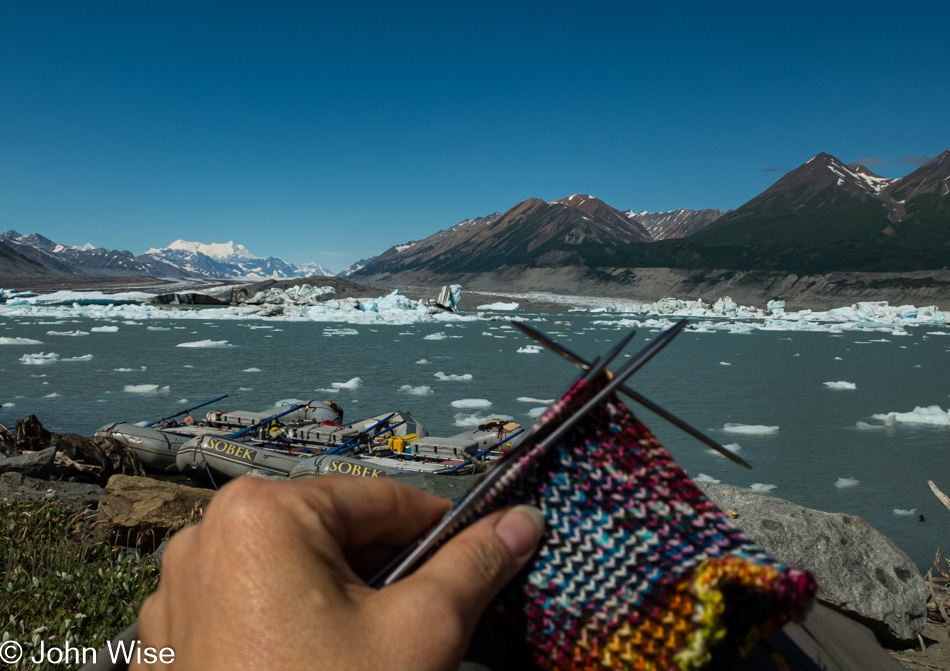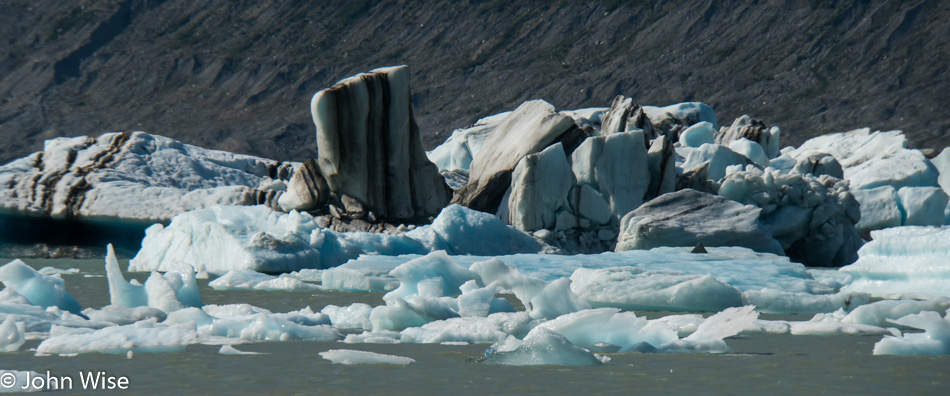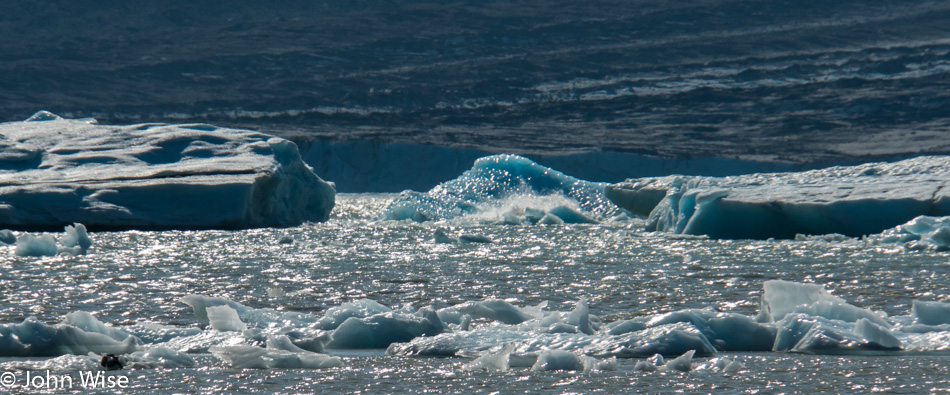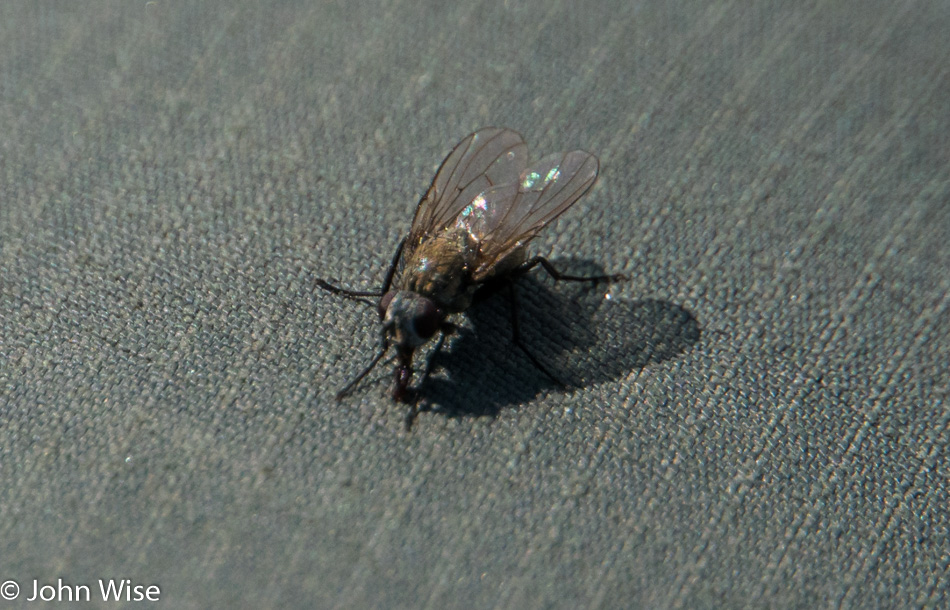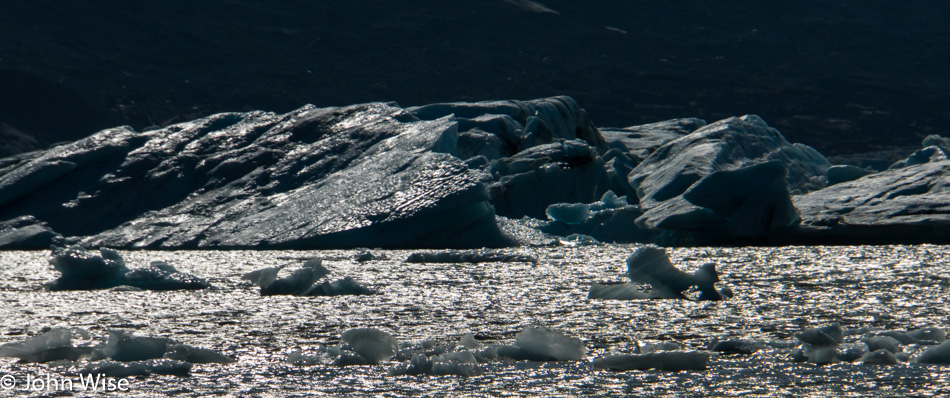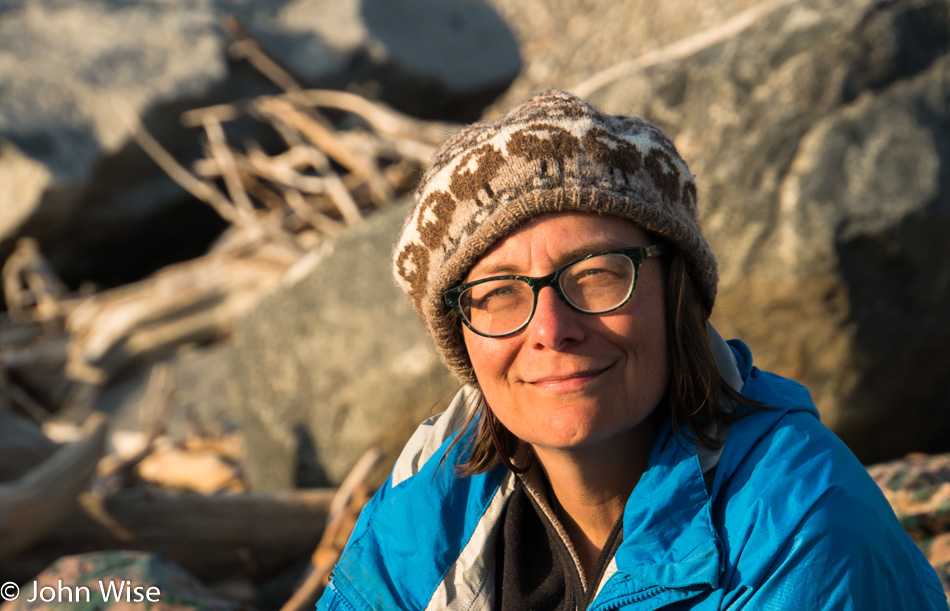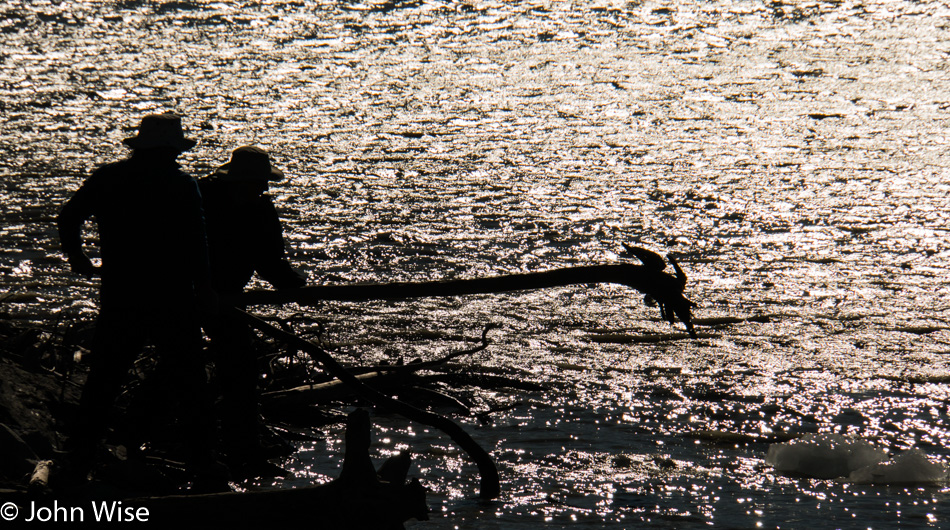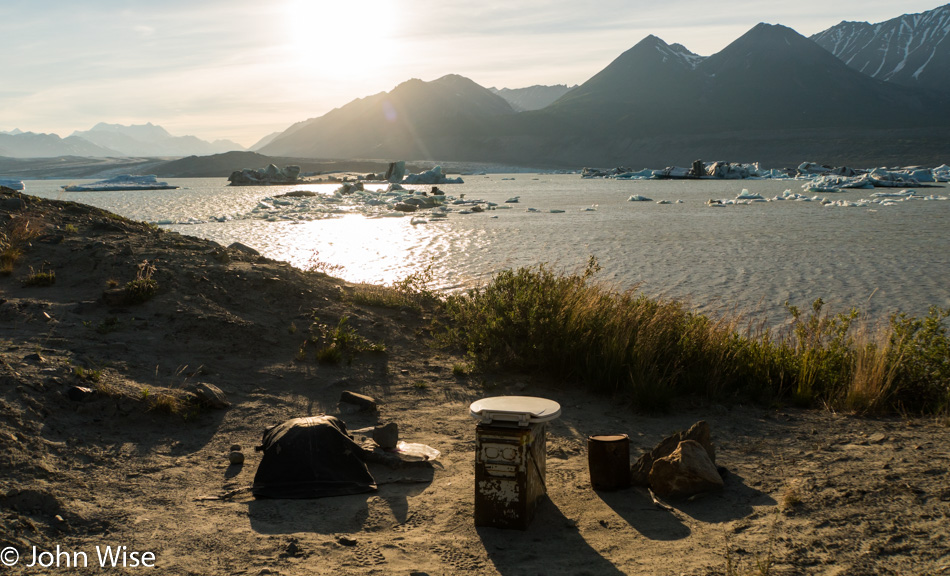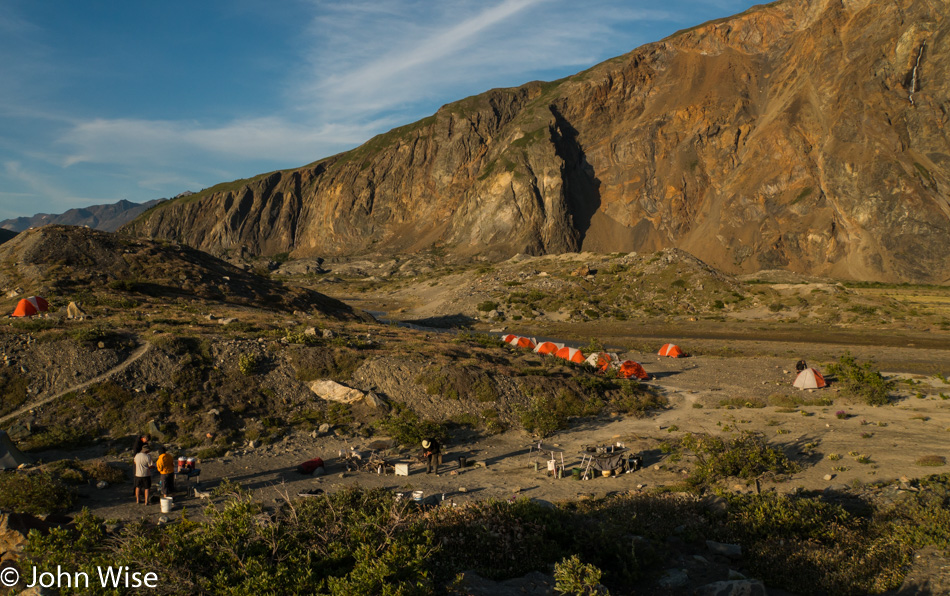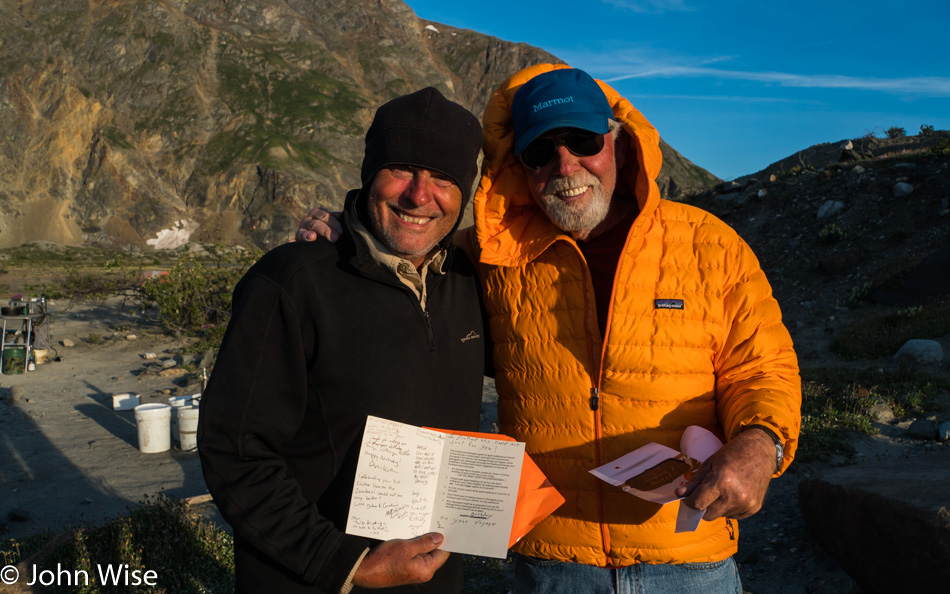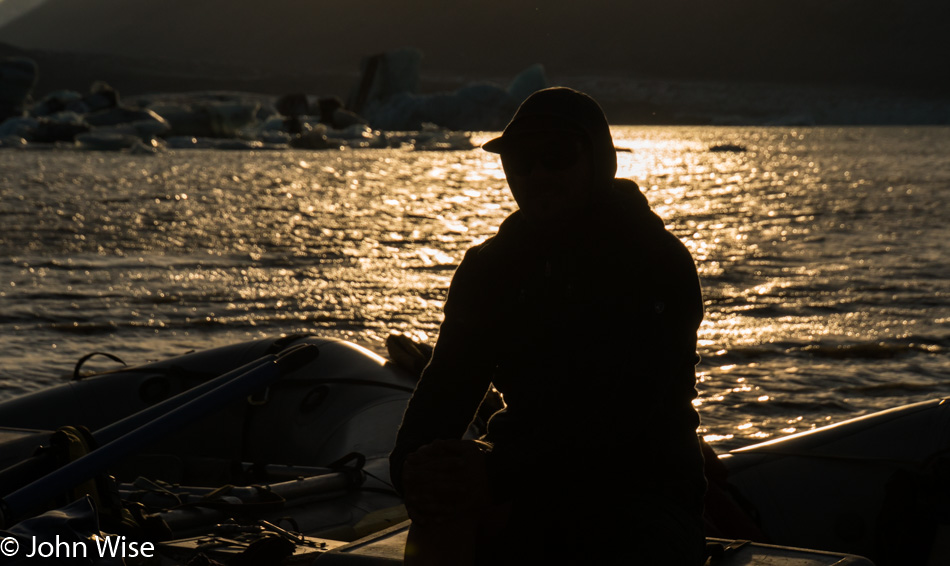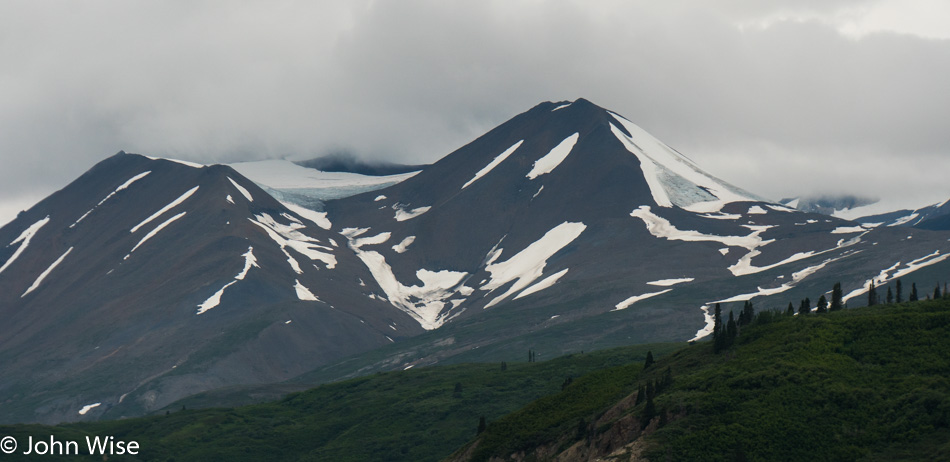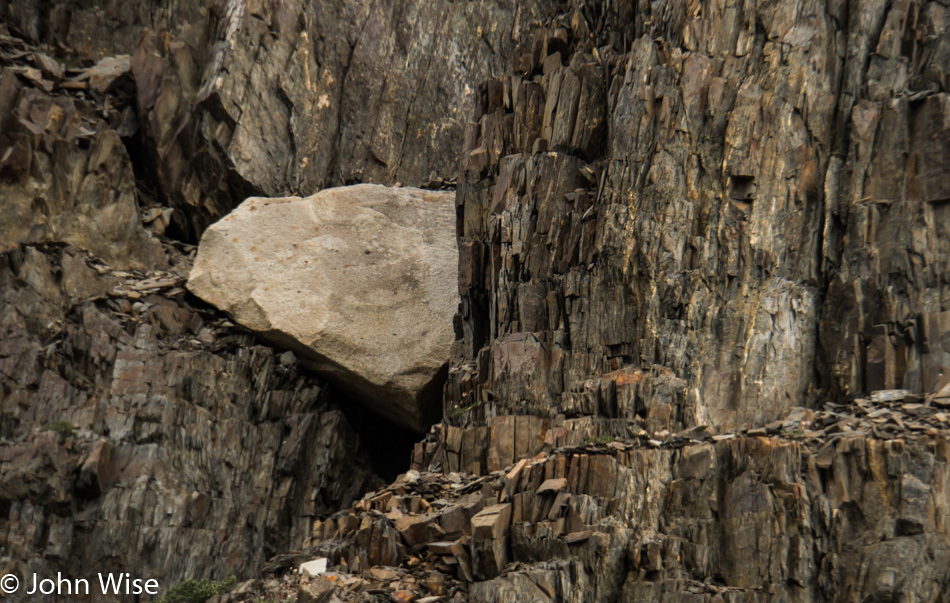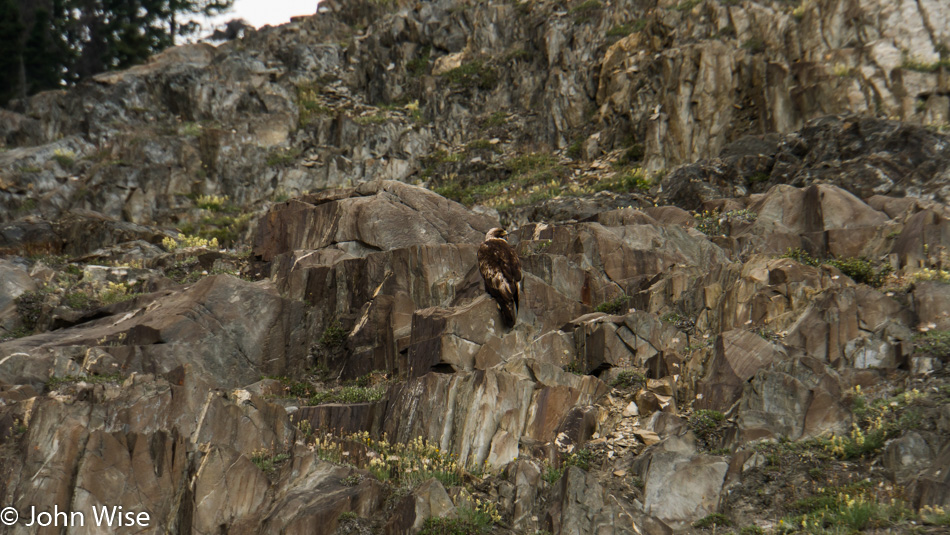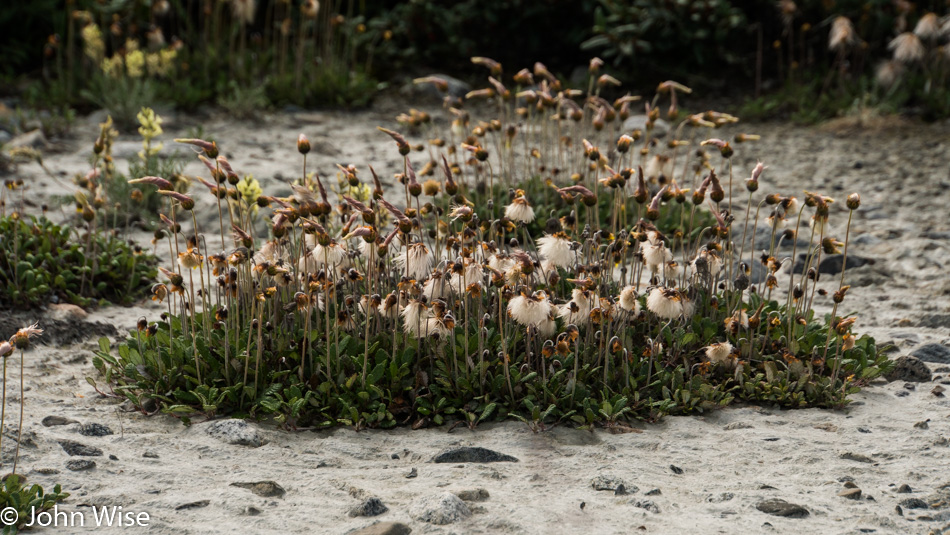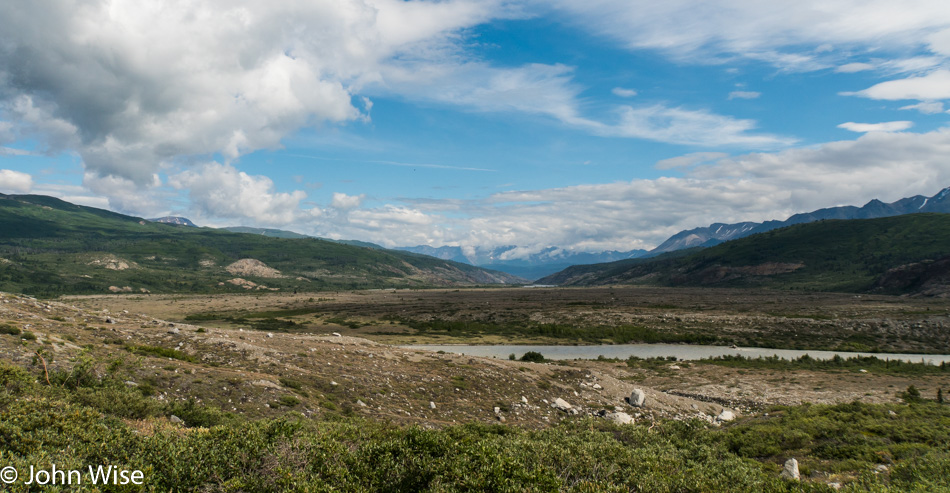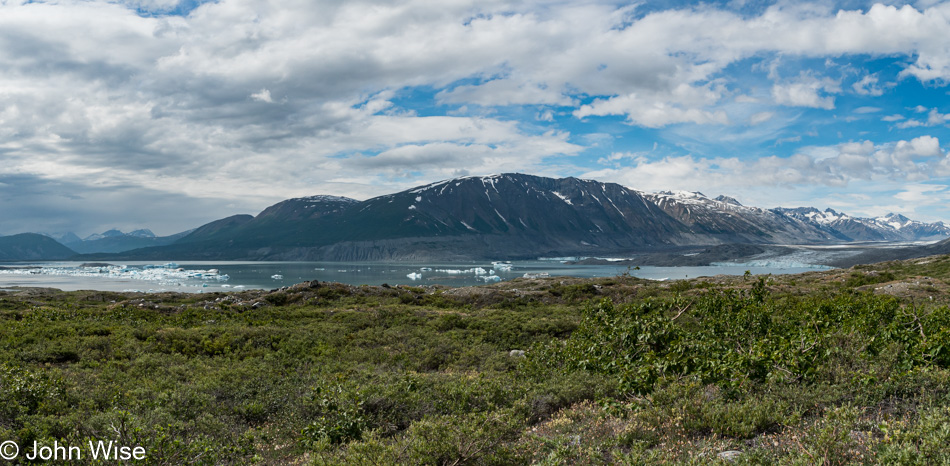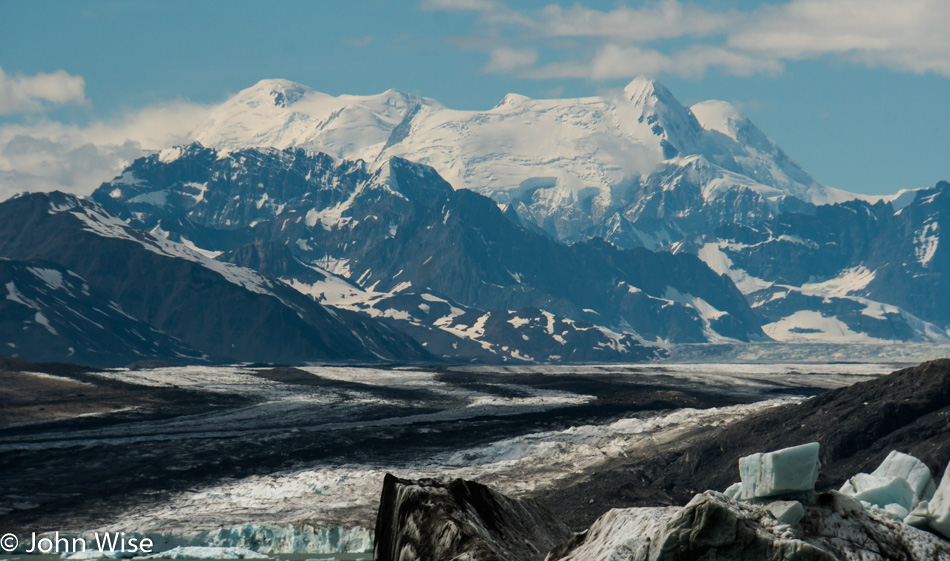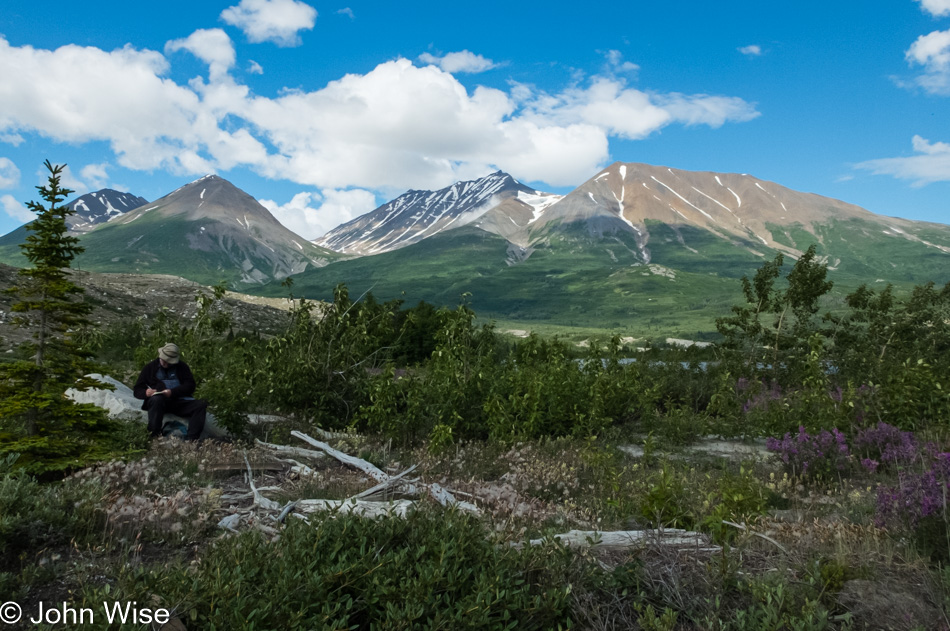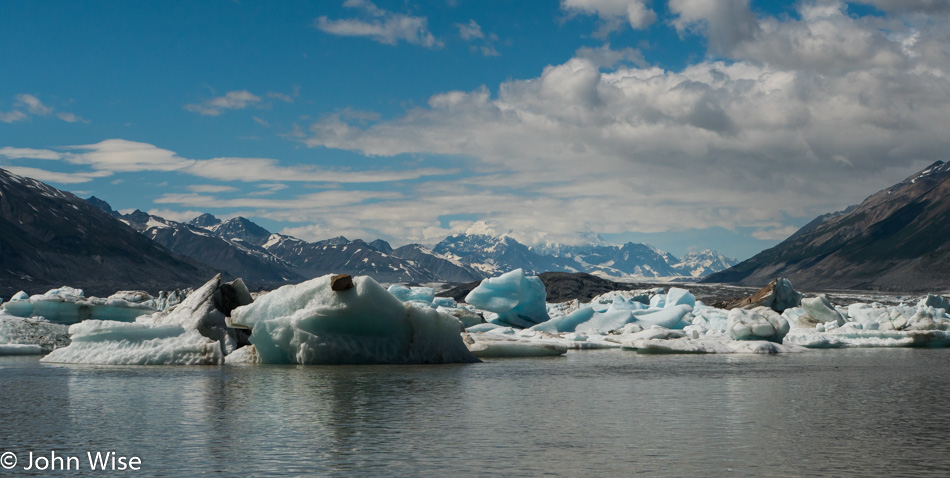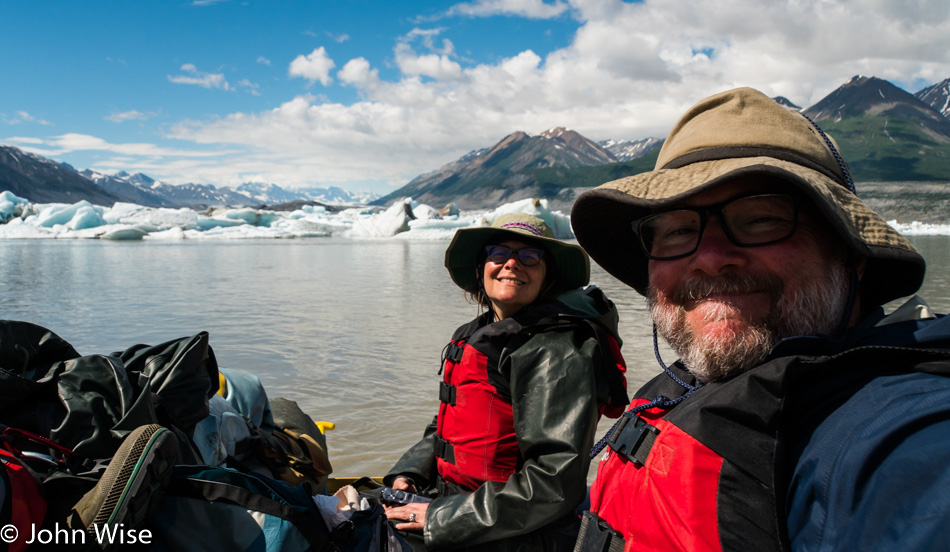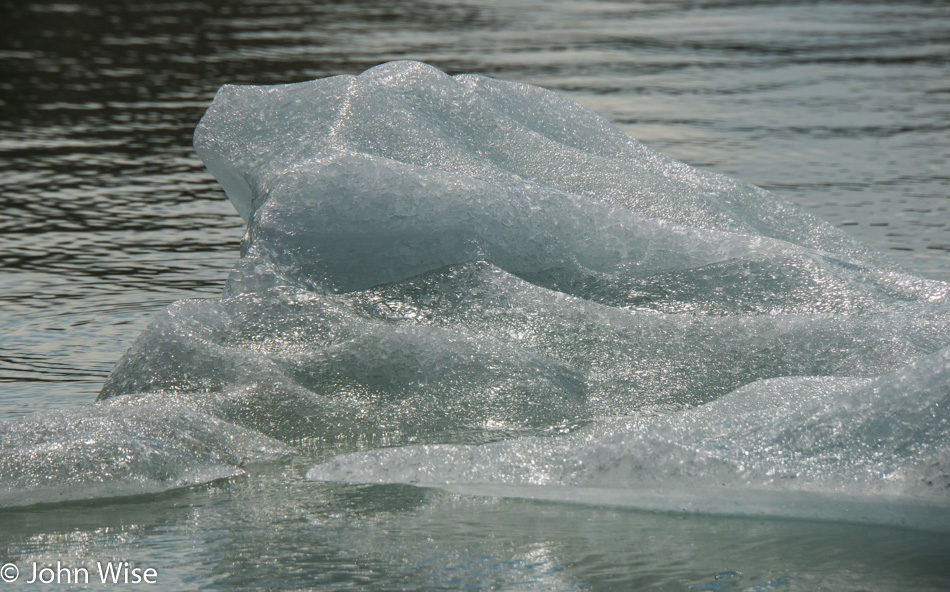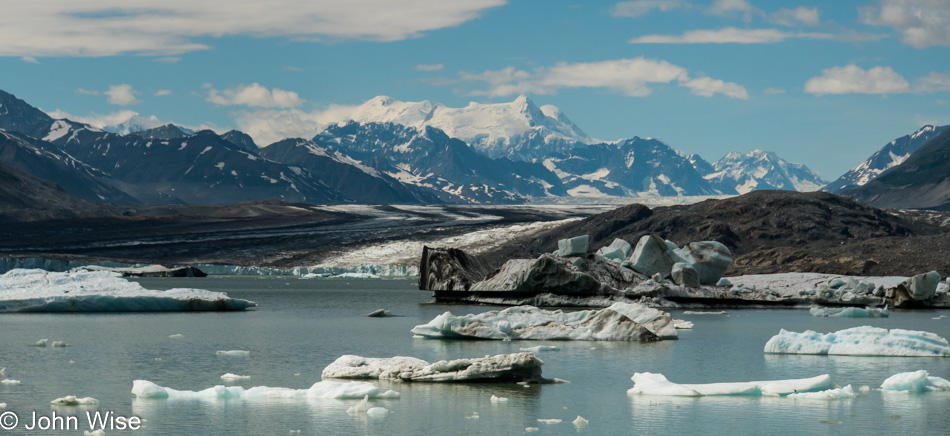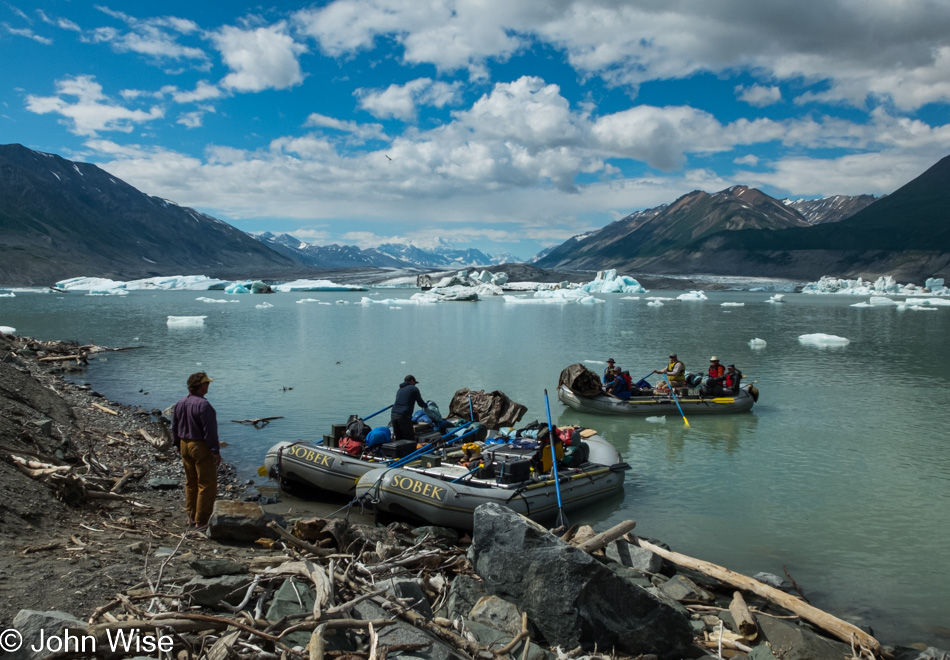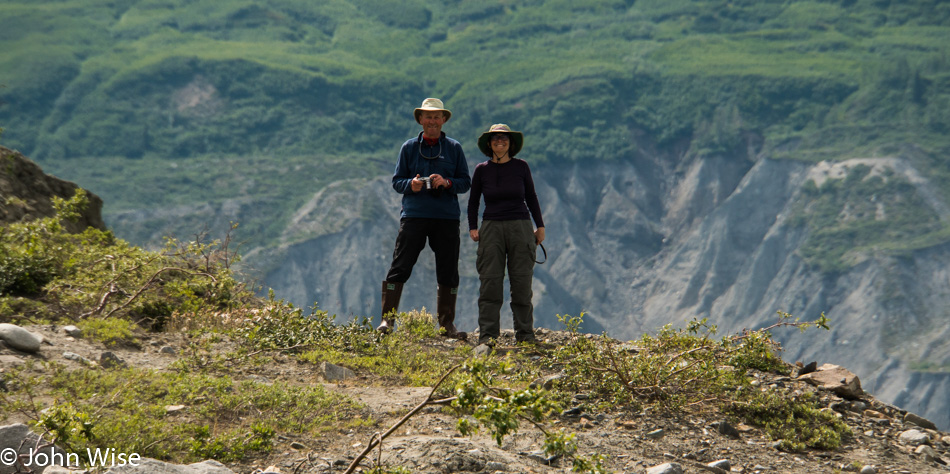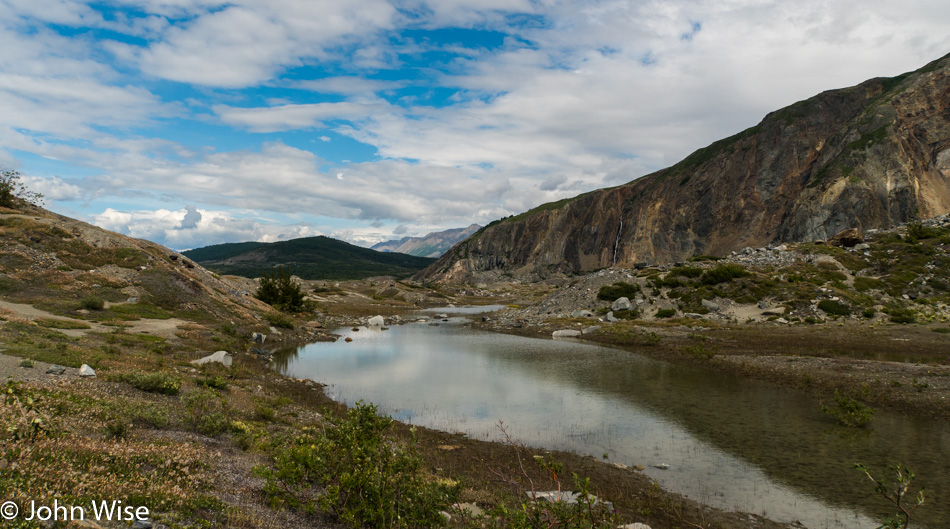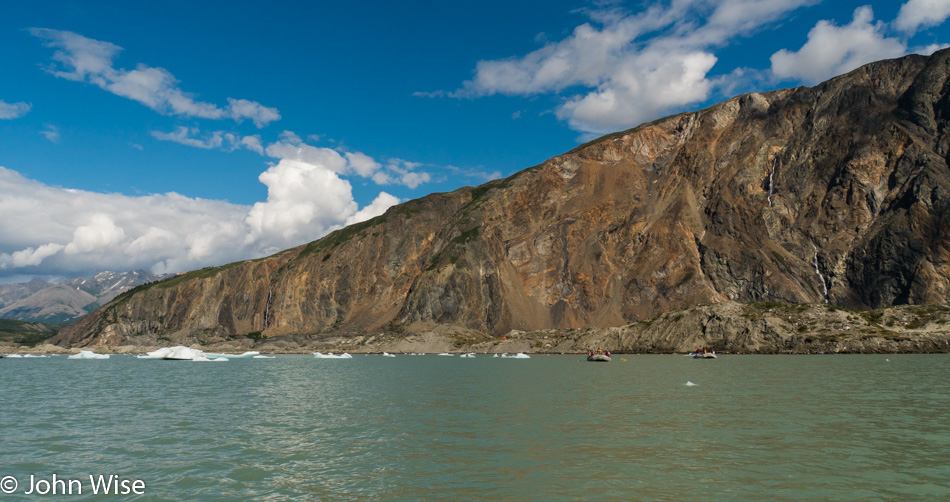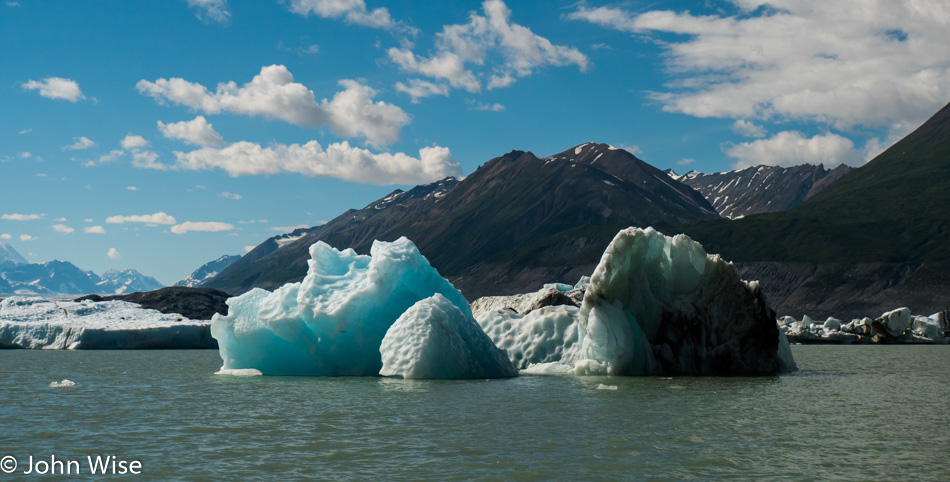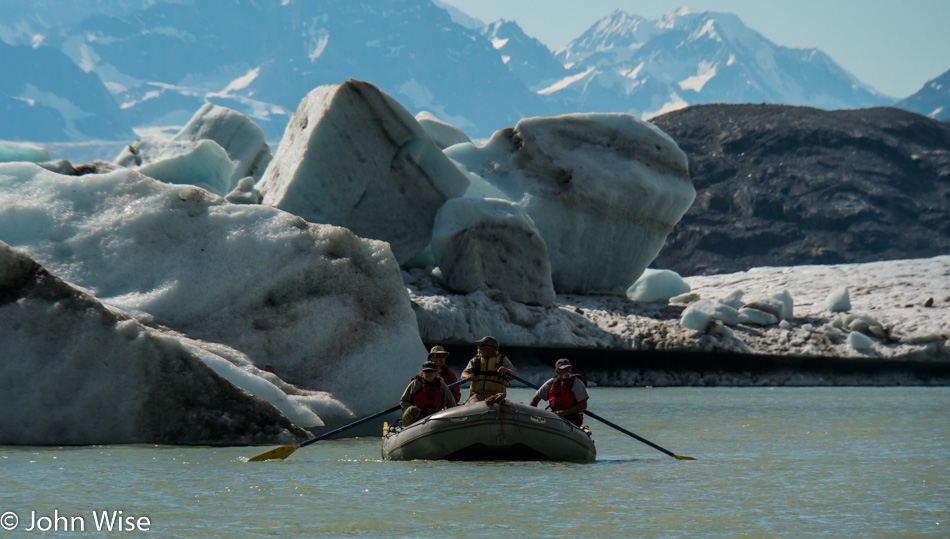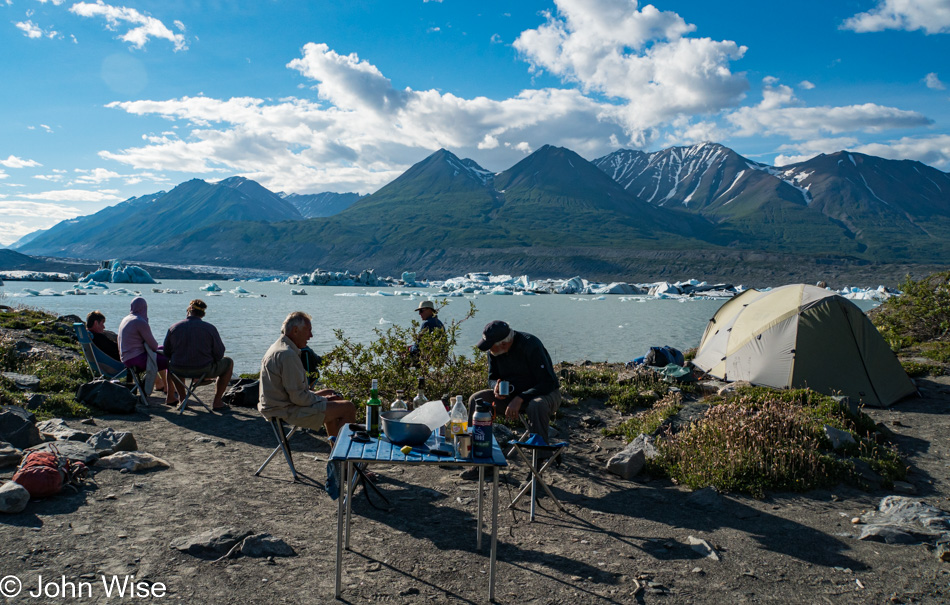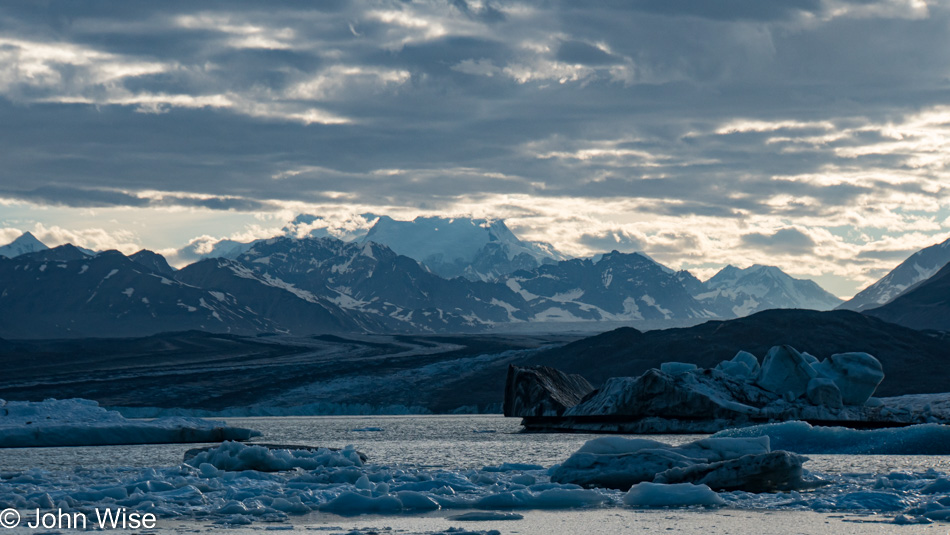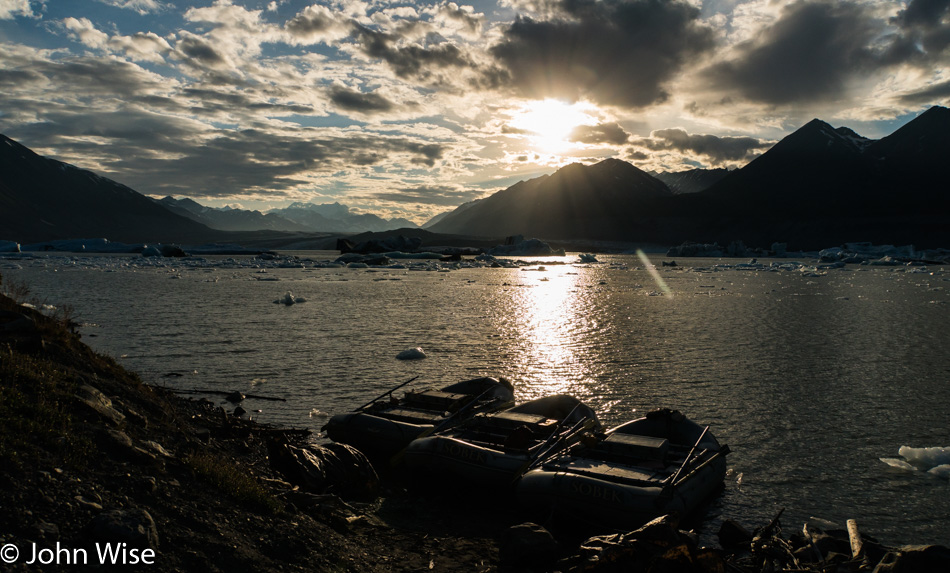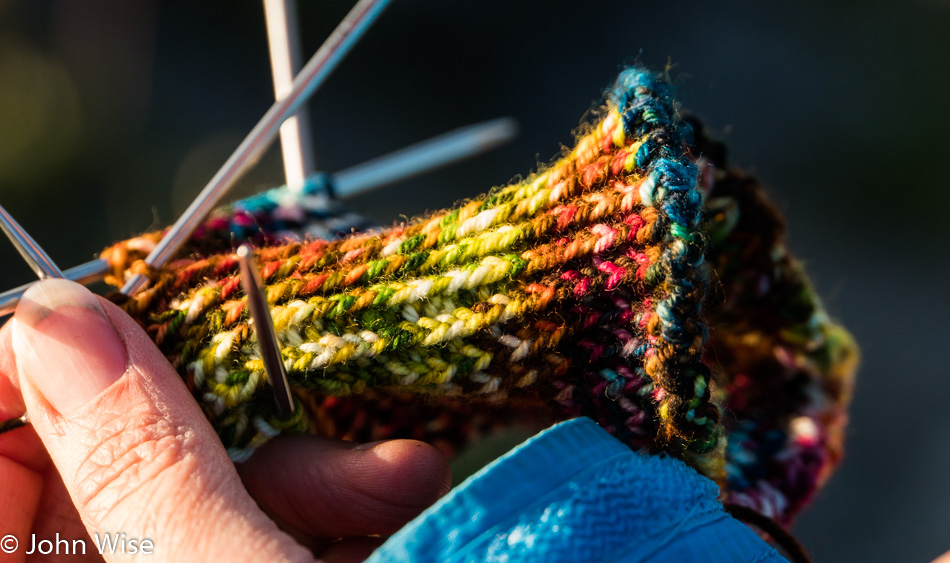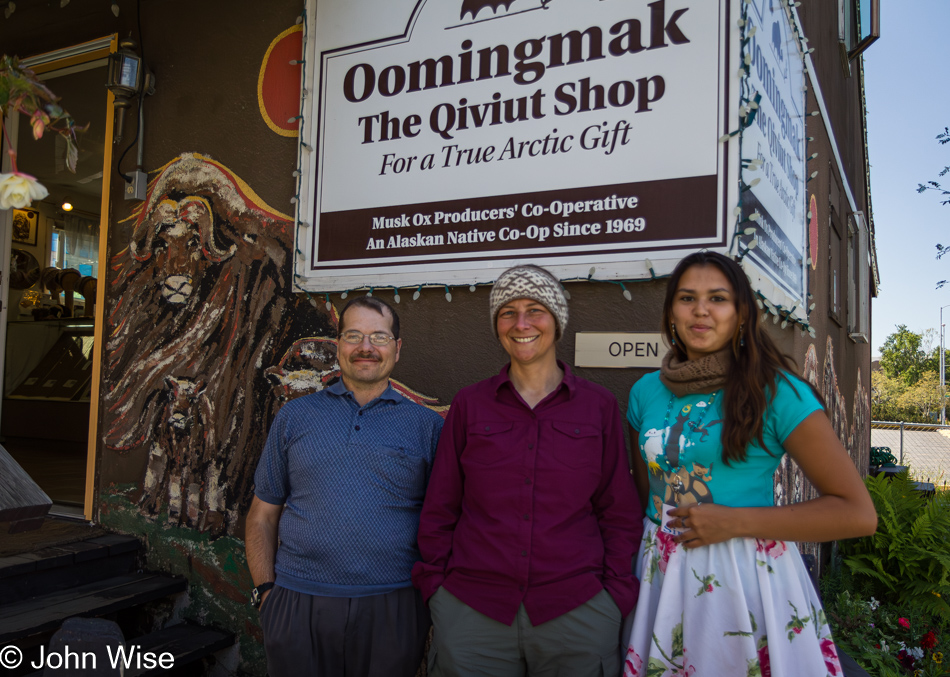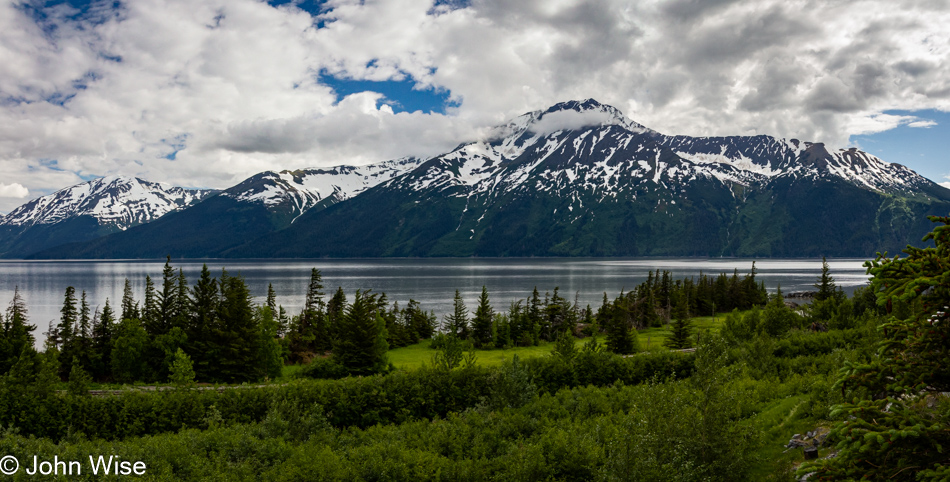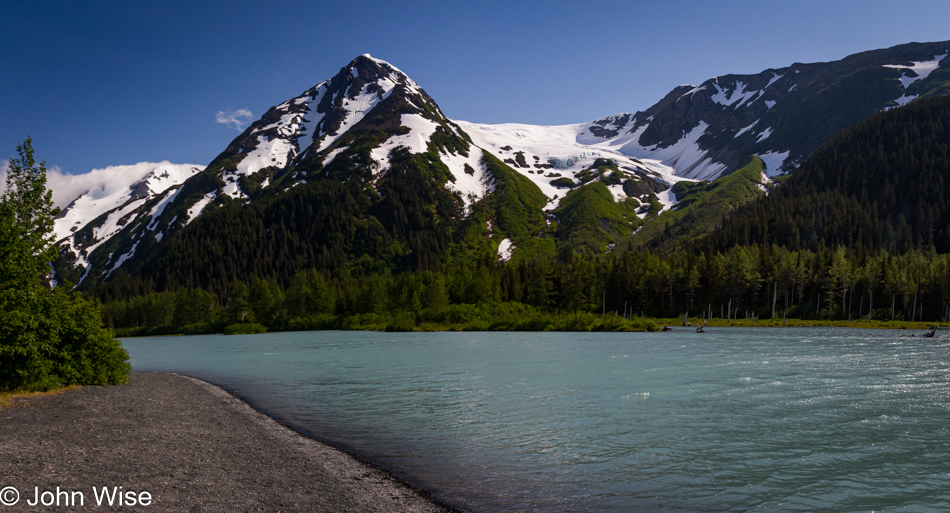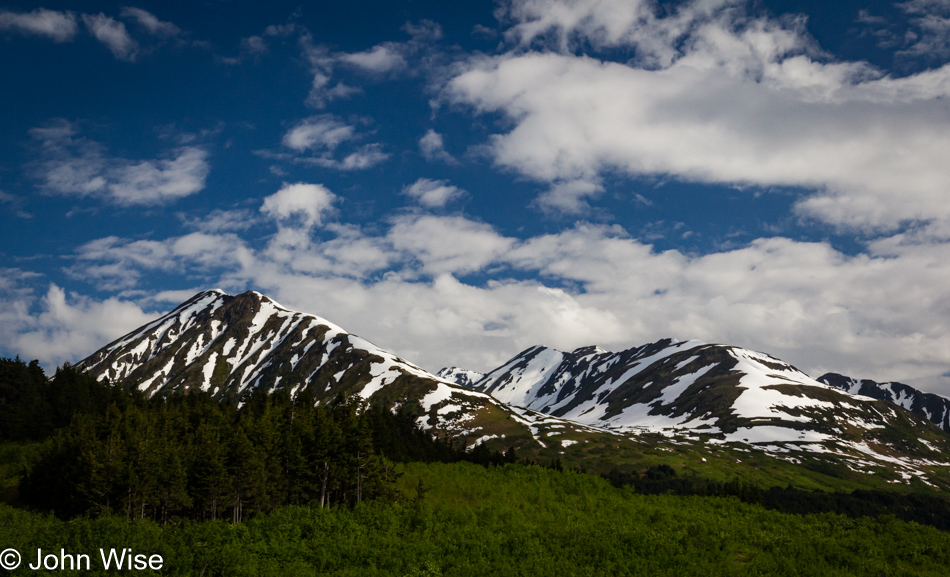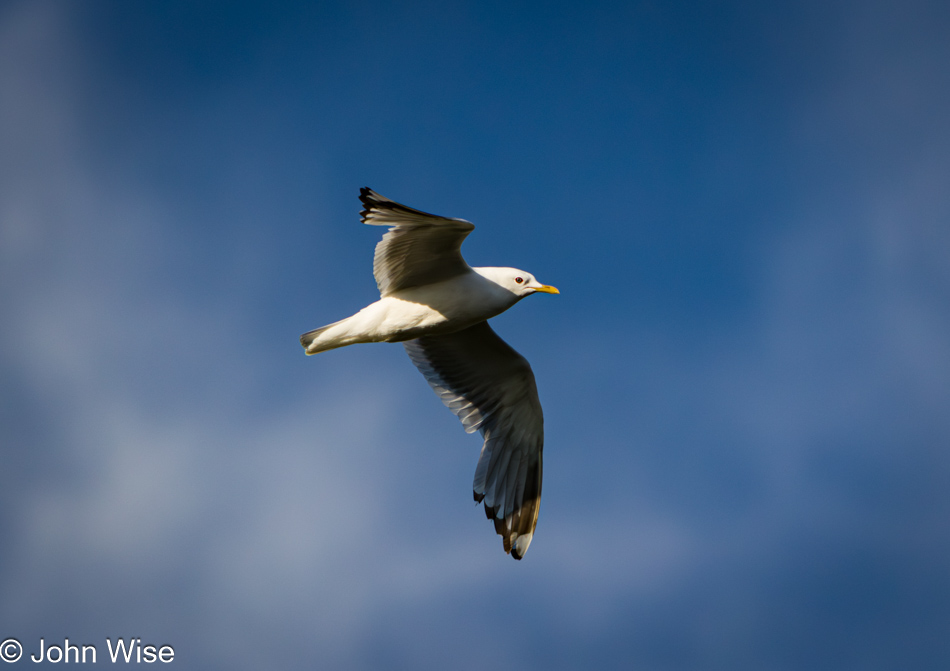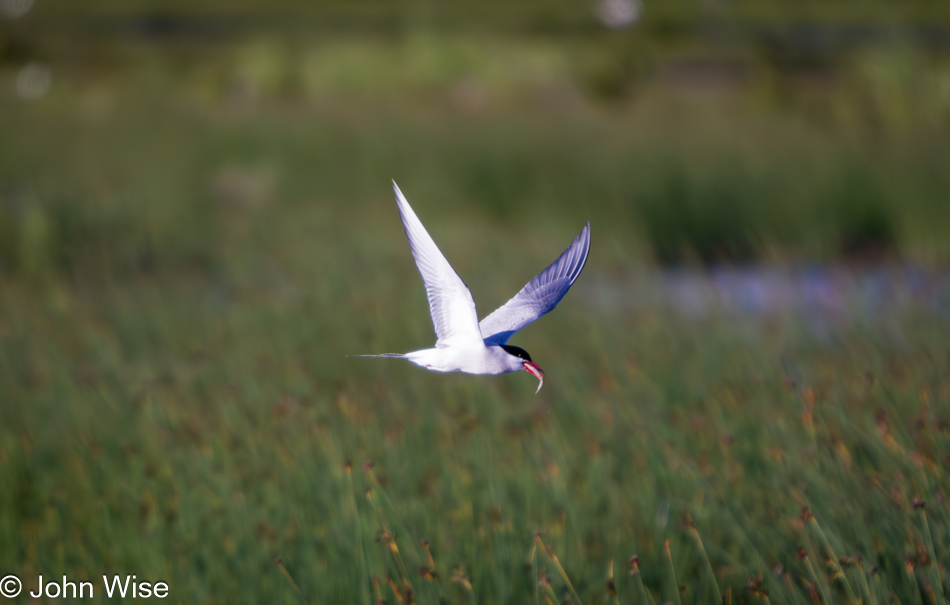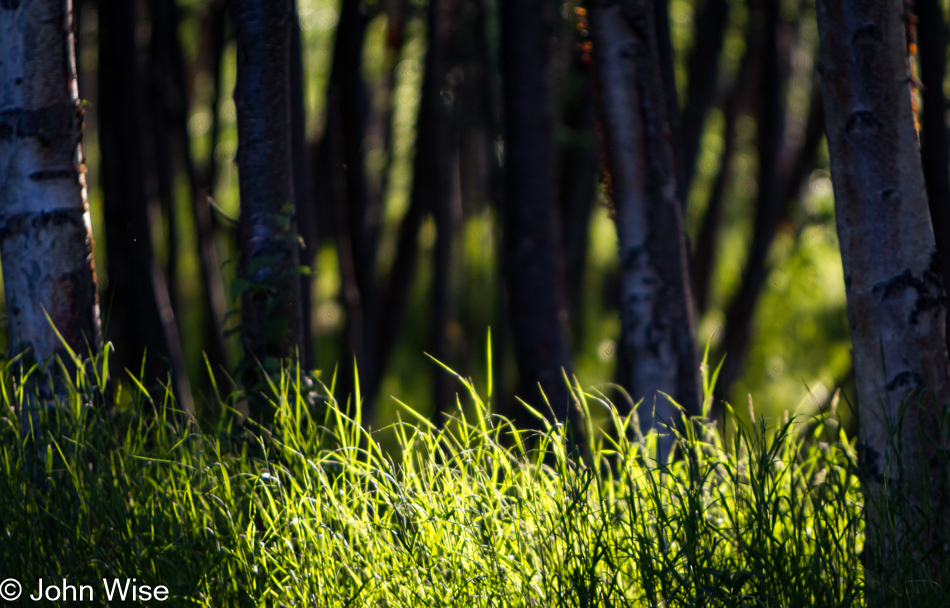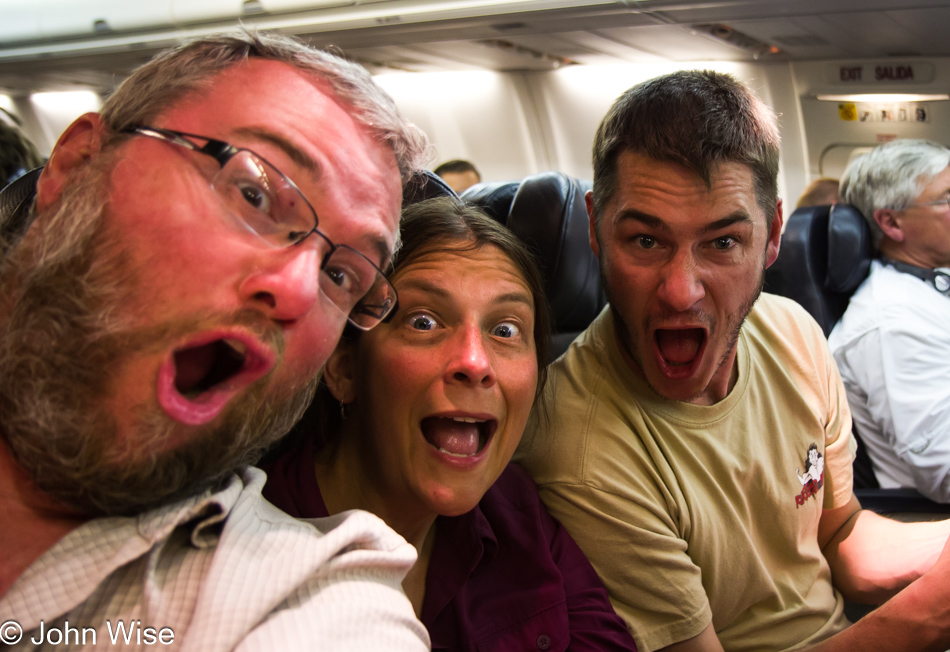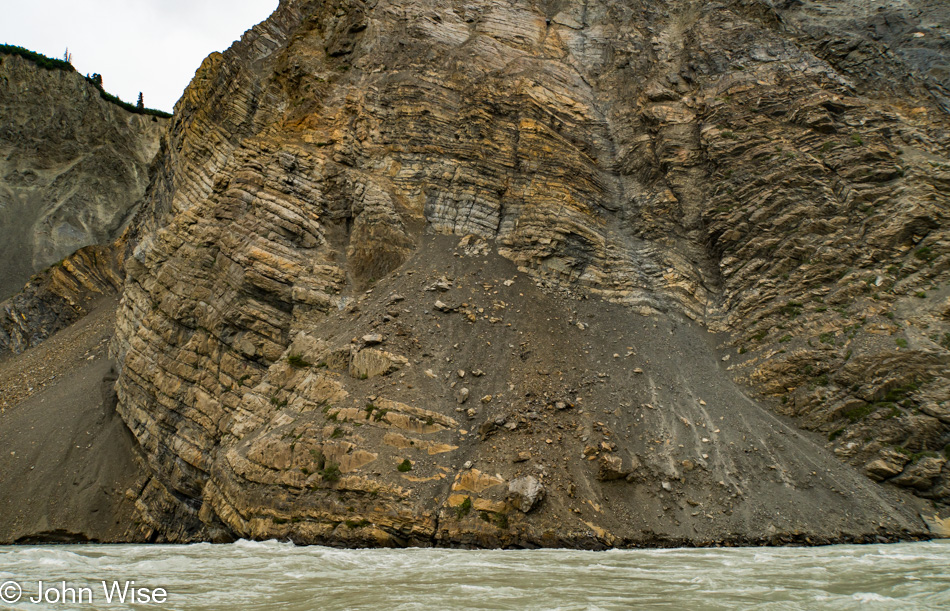
We slept in today. Not even sure how long, as Caroline and I are not traveling with anything that keeps time. This allows us to get on nature’s schedule of awake, tired, sleeping, and waking instead of being beholden to the mechanical gatekeeper gods of the calendar. Others were by now moving about, too, with the telltale sounds of a boatman in the kitchen working on bringing breakfast into reality. Before we emerge, we attempt our ablutions within the coziness of the tent. After a hot day, it’s easy to convince oneself to test the cold waters, but after a toasty night buried deep in a sleeping bag, there’s no way to consider going and placing any part of the body into near-freezing water. Even with an itchy scalp producing a snowstorm of flaking activity on its way to building dead skin glaciers, there’s a limit to the discomfort that won’t be tested this morning. While the head will continue to suffer, the stinky parts are treated to vigorous scrubbing with trusty camp wipes.
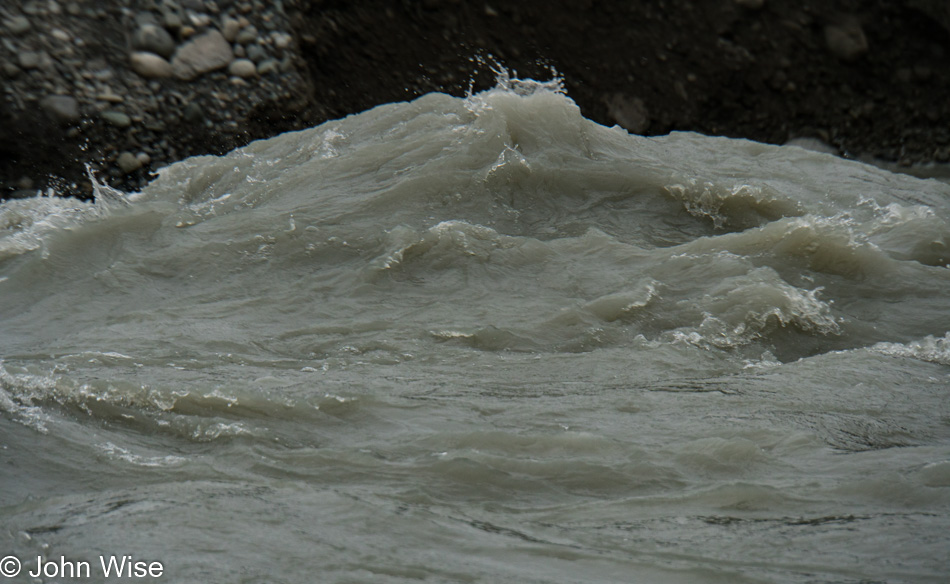
Somewhere between this attempt at personal hygiene and breakfast, the tent is broken down, stowed, and blam; I need to visit the unit – must have been the coffee. My trek over to the unit proved less than fruitful, for while the body was willing and able, poop mountain was too close to eclipsing the event horizon with my knuckles recoiling in horror. Fortunately, my bowel obliged and constricted the imminent movement that felt so urgent seconds before. Resigned to wait, I leave slightly disappointed but simultaneously happy that I “can” wait!
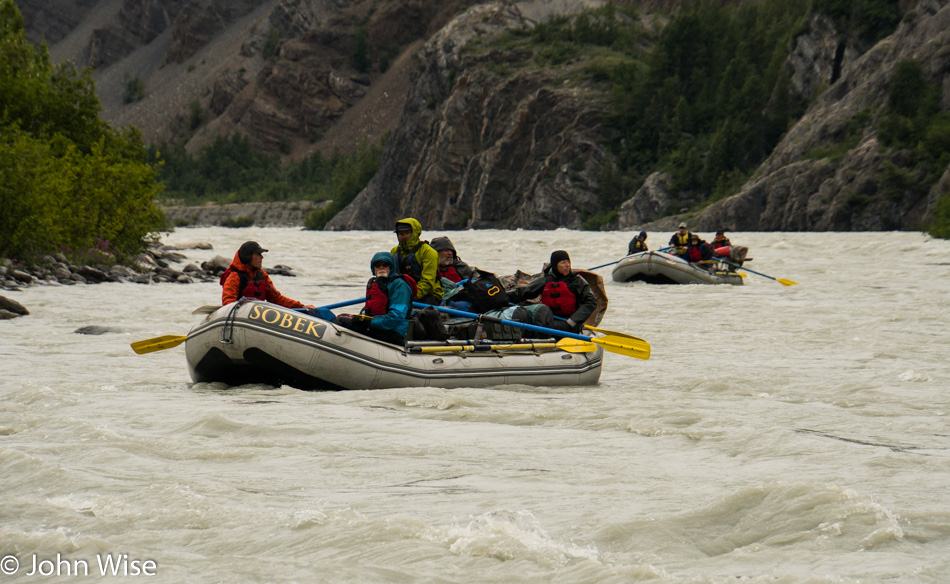
Rafts packed up, we are once again moving downriver in the hunt for another campsite.
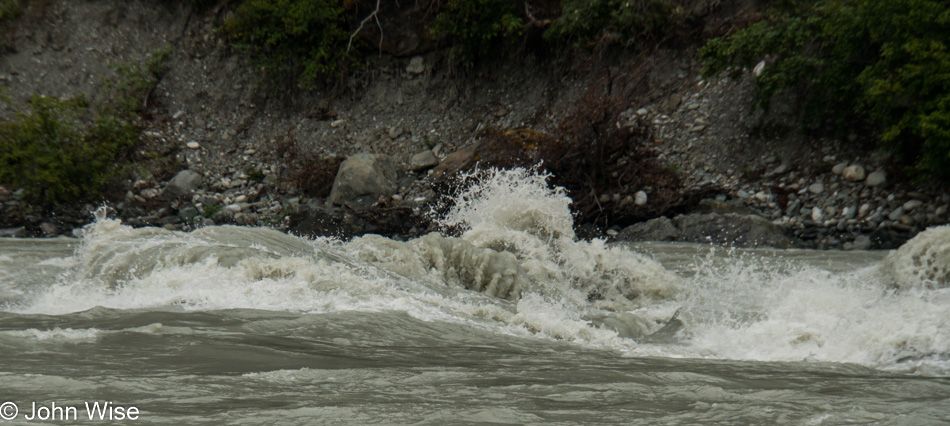
We’ll hit quite a few small rapids on this short stretch, with a couple large enough to have a cold water splash in our faces.
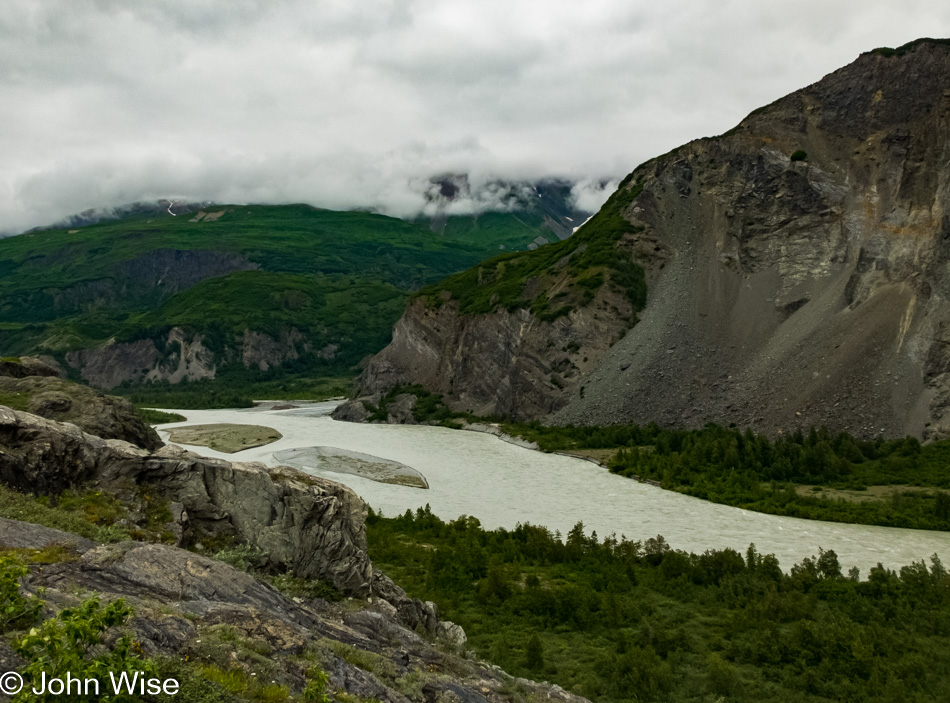
We ran downstream for about an hour before pulling over to explore a place.
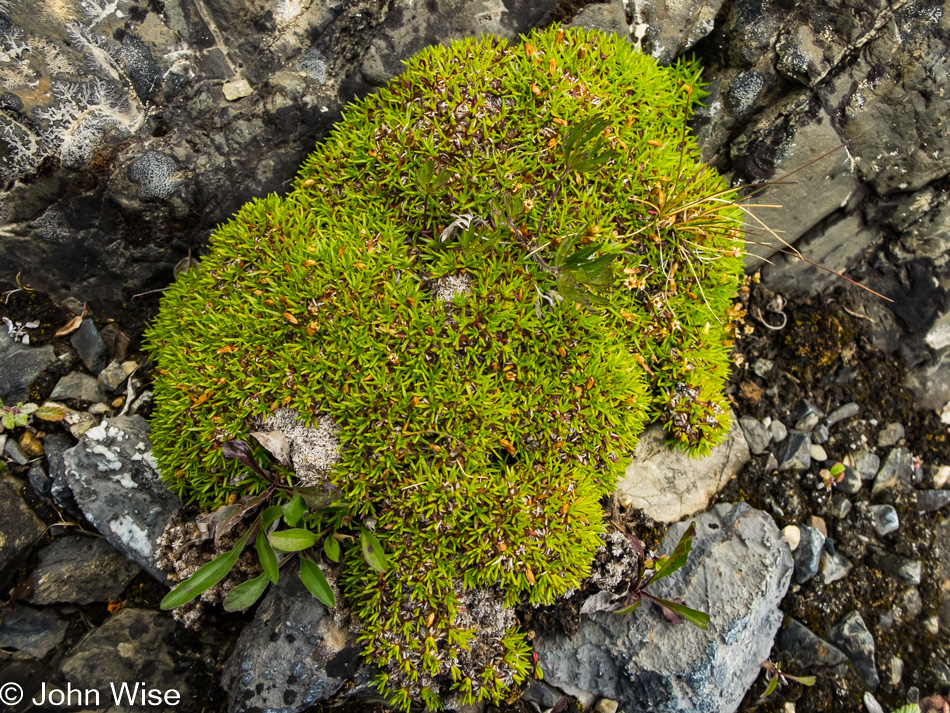
While the others ventured off for a short hike up a knob, I stayed back near the river to check out the small stuff.
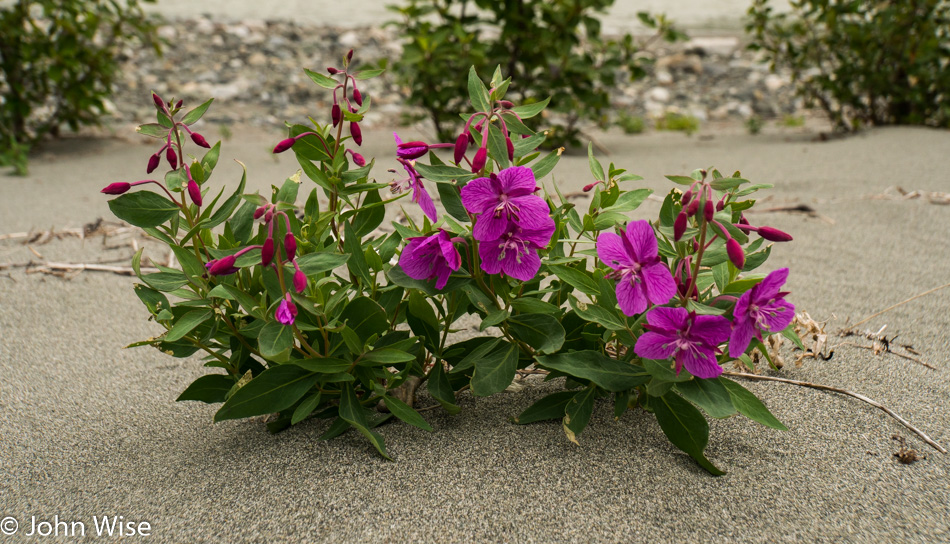
Such as flowers.
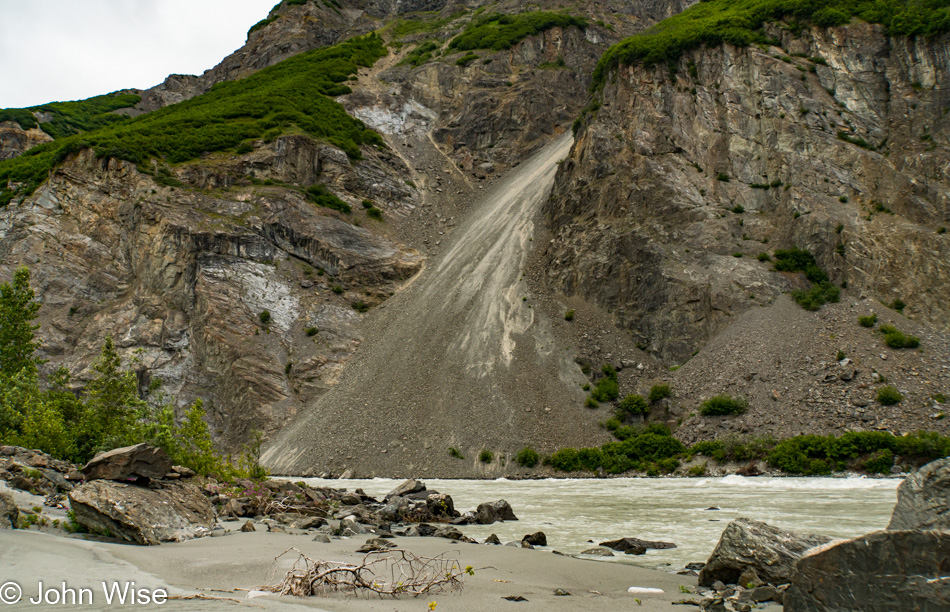
Found some bear tracks that were quite faded and filmed the nearby small rapids. In these quiet moments alone, I go looking for small details, not just in my surroundings but also within. Contemplating the solitude of the bear moving through a landscape that is its own or the accumulating gravel across the river on a cascade of ice that, in all likelihood, is there all year round, I try to better understand this place that I’m only momentarily allowed to visit. I wonder how, over time, this small corner of Earth appears alive as the river runs through its veins and the mountains shed rocks and boulders as they grow up or fade away. These fleeting thoughts produce few answers and leave me wanting to know more as I try to dig deeper into my mind to discover the questions that will help produce insights that prove so elusive.
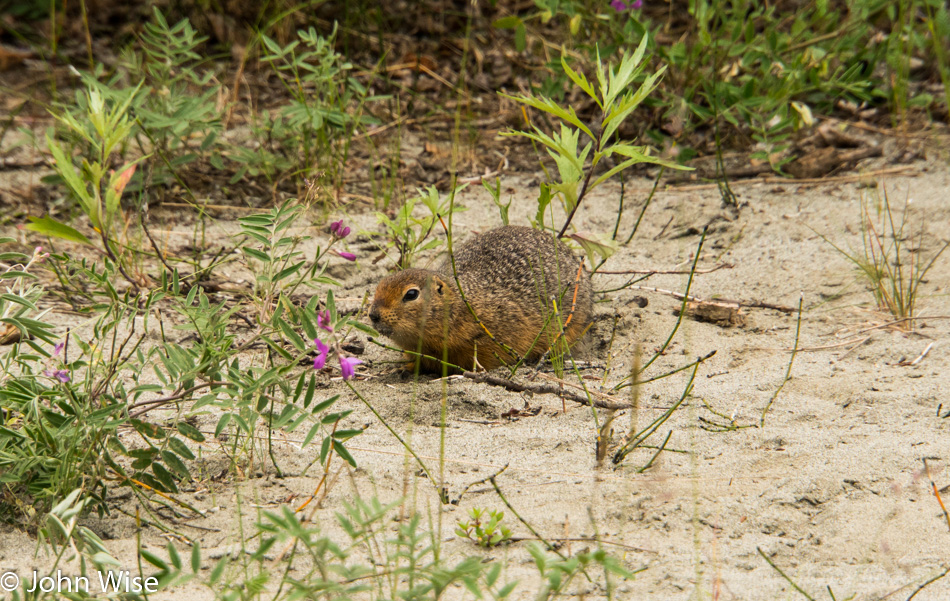
Sitting down on a rock, ready to take some notes about the day so far, a couple of squirrels come in for a visit. They were not looking for food; I guess that I’m the first person they may have ever seen. My imagination suggests that they are intrigued to see these two-legged animals with weird, colorful skin that offers zero camouflage ability. After not much more than a few seconds taking in the situation, they go about their foraging as they brush aside sand and dig just below the surface. All the while, as one of them works, the other remains vigilant in observing the surroundings to ensure their safety. These plump guys probably make for good eating if you are a bird of prey. And then they scurried off, as it was likely they heard my travel companions returning before I did. Writing will have to wait for another stop.
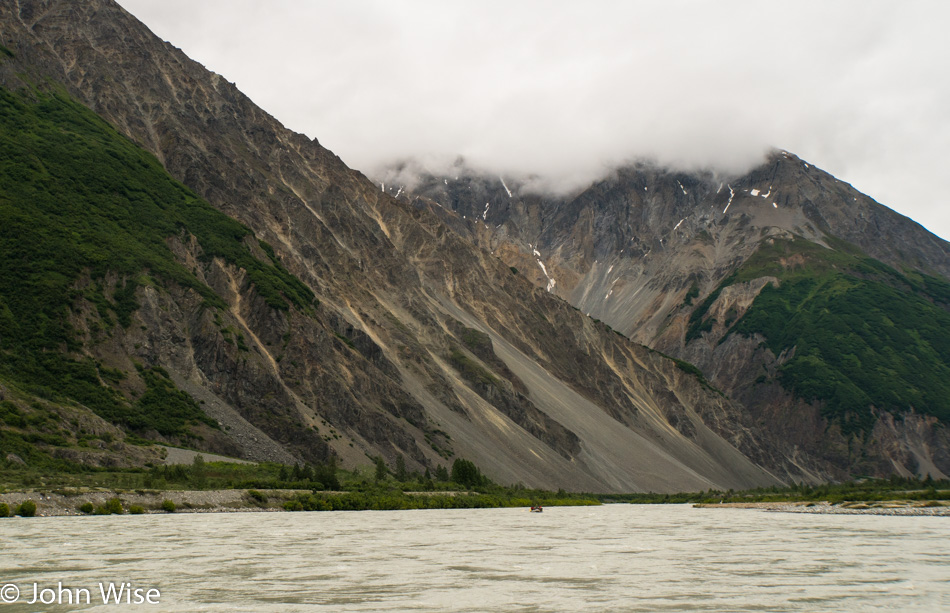
Heading to another adventure on the Alsek River in the middle of Nowhere, Canada. See the raft on the river for scale.
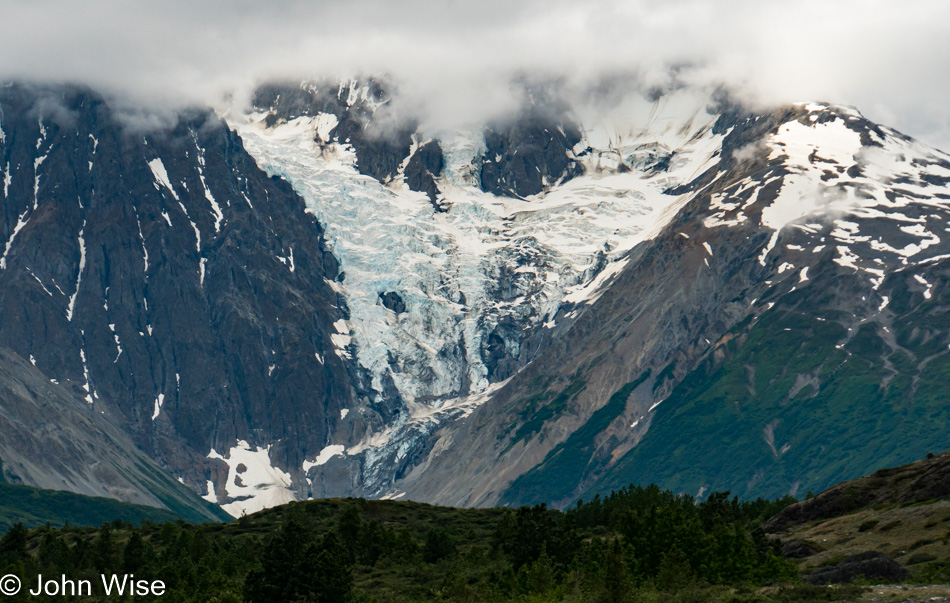
A perfect example of a hanging glacier can be seen from the river as we start our approach to Mount Blackadar. As Caroline and I know part of this routine, we already know that we’ll be camping on the other side of this mountain in front of a giant and somewhat dangerous glacier.
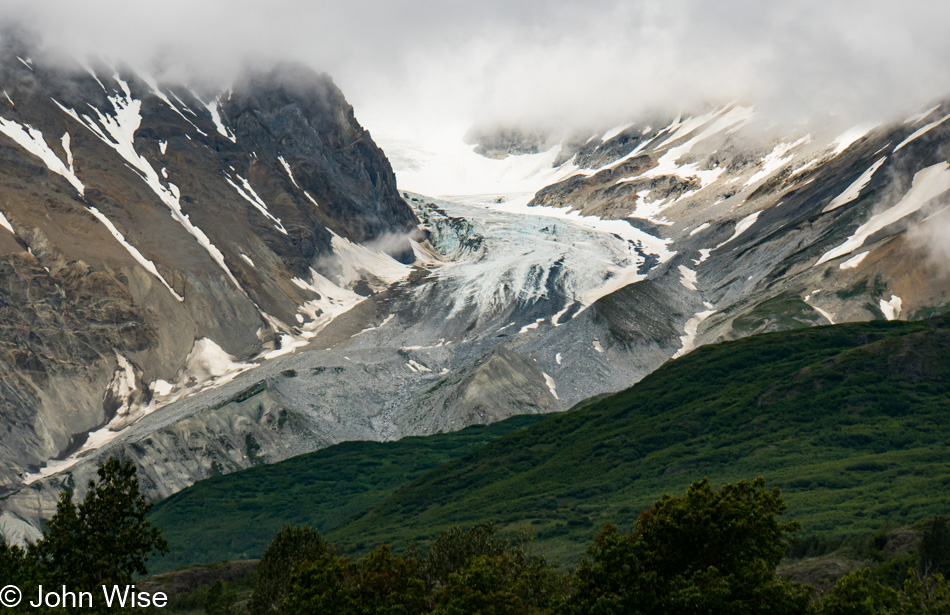
Some of these photos might seem a little blurry; well, I’m shooting from the river with less than optimal lighting conditions where the brightness of the snow and sky wreak havoc on getting a decent exposure on dark rocks and deep green forest in the foreground. While I’m not trying to win awards with these photos, I do want them to bring us back to this extraordinary day when we traveled a corridor that very few humans have ever seen with their own eyes.
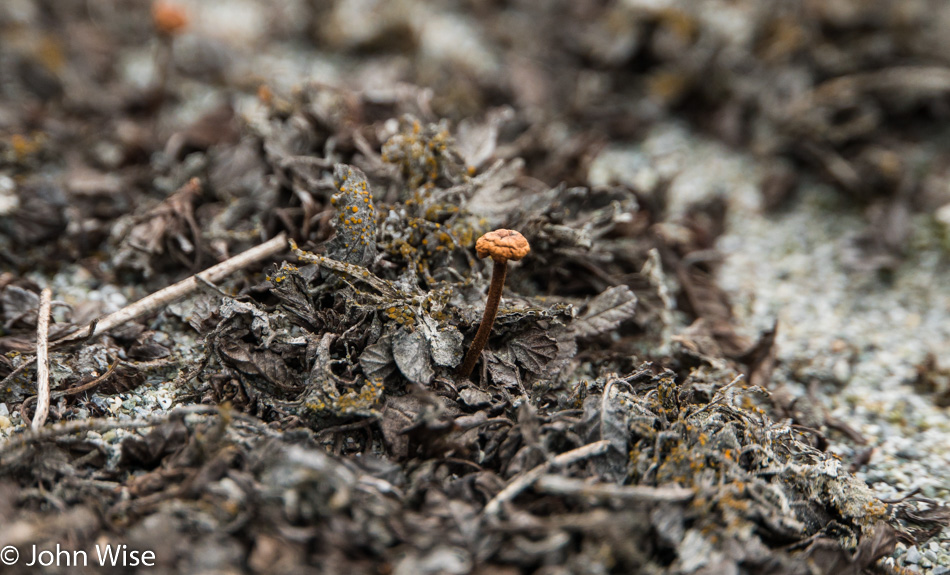
Somehow, all of a sudden, it’s mid-day and time for lunch. We are at the Serengeti, as it is known, due to the abundance of wildlife that can be spotted here. While Mexican-inspired wraps are being prepared, I’m investigating what might be out here besides the obvious giant mountains, glaciers, river, and trees.
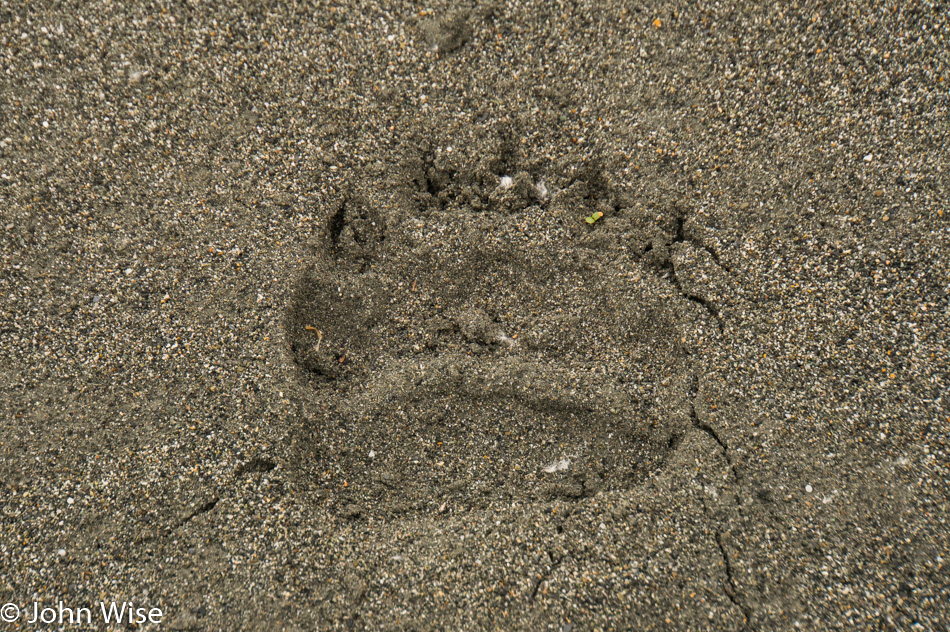
This grizzly bear paw print was headed northeast, hopefully on the way back to the Yukon. Getting down and smelling the bear print, I could tell that this female passed through here three days ago, so I need not worry that she was still in the area. Okay, that was royal bologna, as I just made that up, but it made you think a moment, didn’t it? Near to the paw print was a single cub’s print, traveling with mom’s. I believe it was at some time on this day we passed from the Yukon into British Columbia; maybe it was yesterday, not that this detail has any bearing on things.
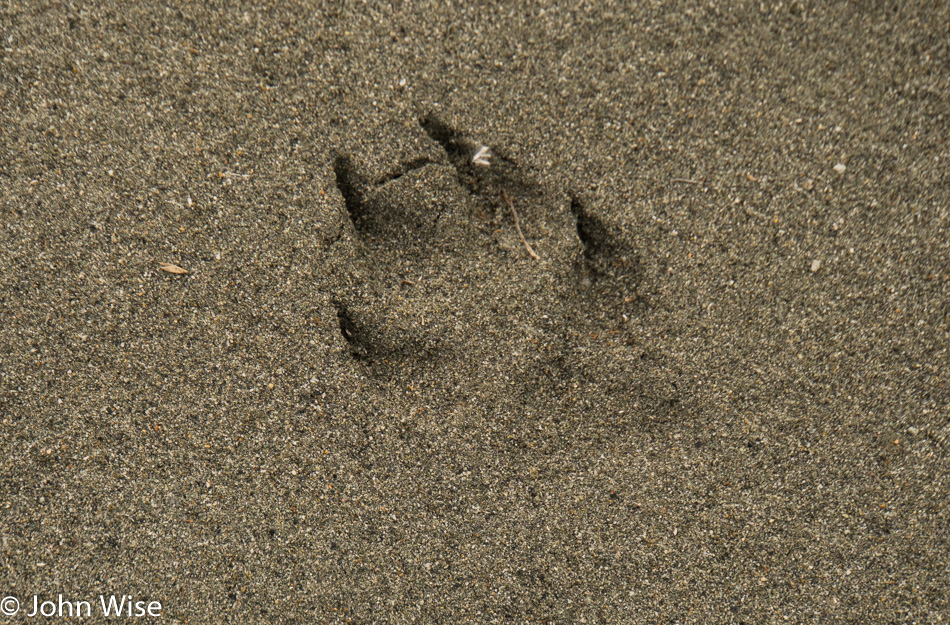
No sight nor sound of wolves anywhere during this trip, just this paw print to let us know they are present. Time for lunch.
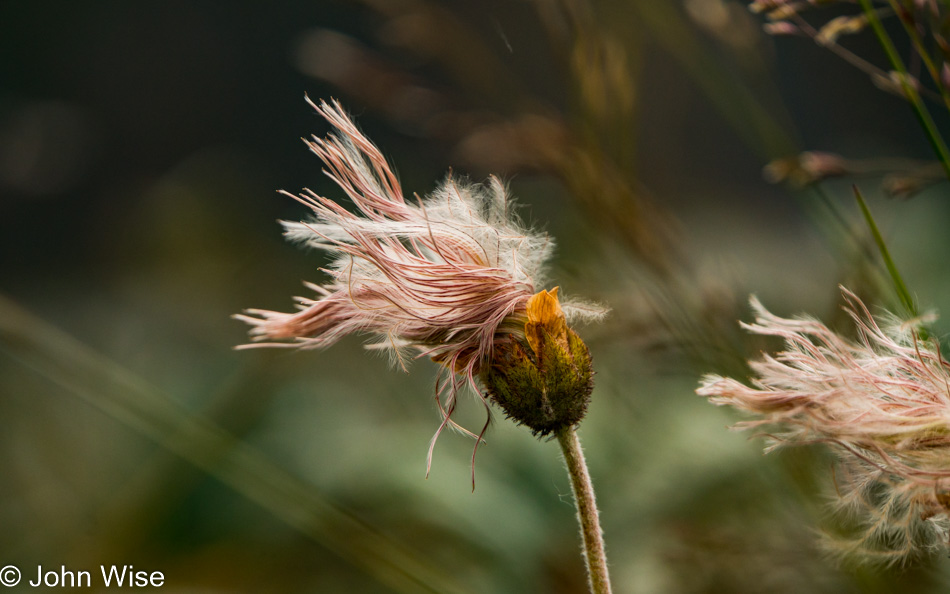
We are off for a hike over hill and dale, looking for the perfect spot to catch a glimpse of whatever wildlife might be present or even these lovely dryas. This robust and nearly ubiquitous plant has followed us from the first day of our trip, and still, I do not tire of admiring it.
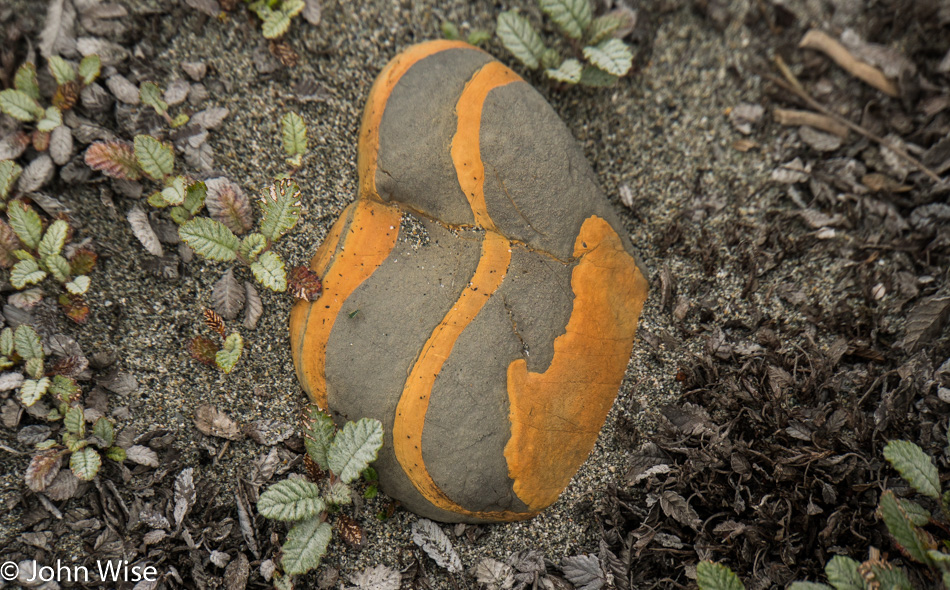
It’s not every day that walking along you look down and see a heart-shaped orange and grey rock, but here in British Columbia it just may be more common than one might imagine.
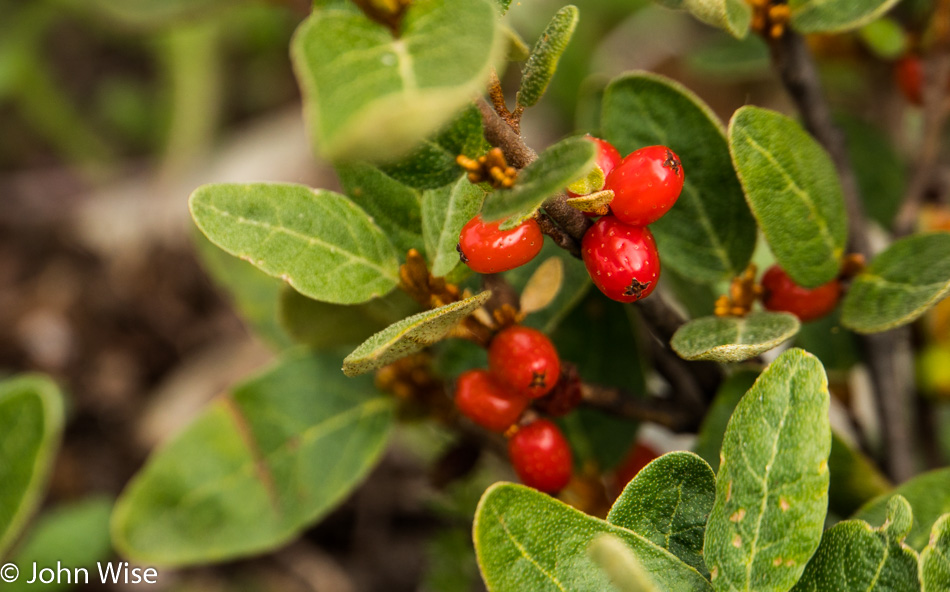
While they may look yummy or poisonous, depending on your perspective, these are, in fact, soapberries. This particular version, I believe, is the shepherdia Canadensis, commonly called Canada buffaloberry. If I’m correct about the species, then this fruit is edible, though it is bitter and, in larger amounts, can cause bowel irritation due to the saponin, which is the chemical that also gives this berry its name related to soap.
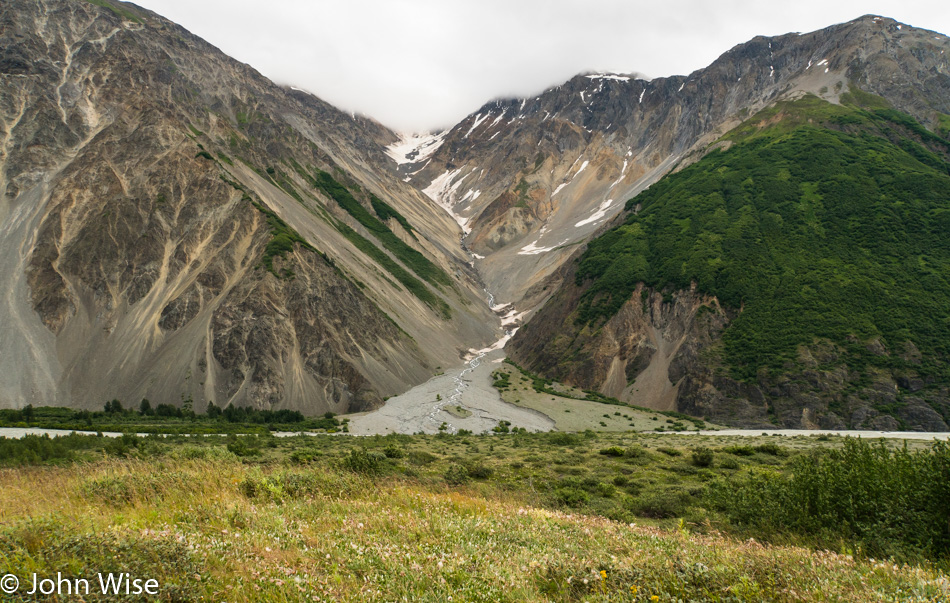
From the top of the hill, we can look back towards the Alsek from the informally named Serengeti. Somewhere down there are our rafts, and I have to admit that every time we leave them (well tied up for sure), I’m a bit nervous that one will break free and make a solo voyage down the river without us. Fortunately, this has never happened, well, except that time in the Grand Canyon on the Colorado at Black Tail Canyon, where fortunately, an eddy caught it, keeping it a prisoner and safe for our return in its swirling waters.
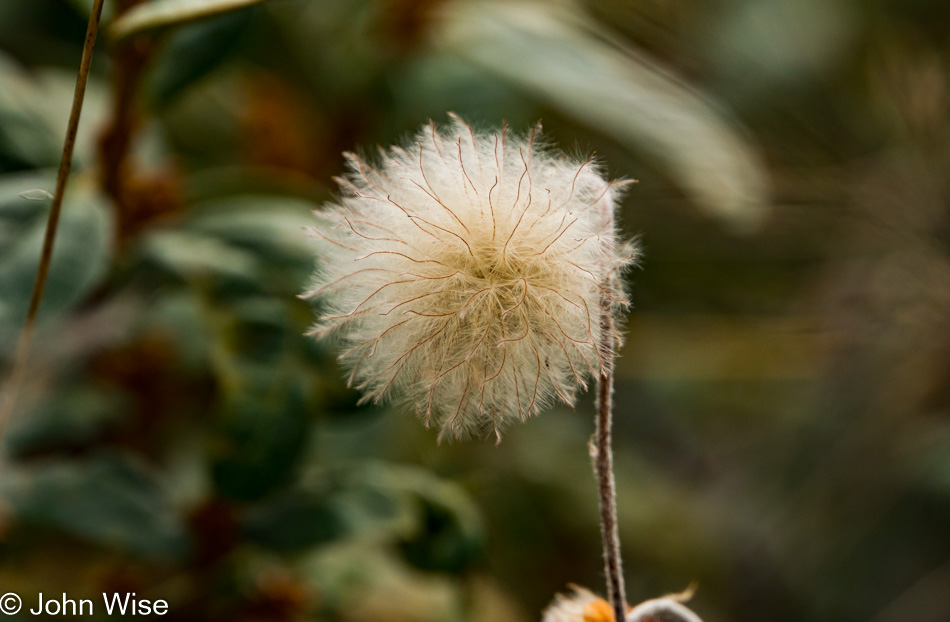
Yeah…..I really do have a thing for this stuff. Its formal name is Dryas octopetala (I hope), and is related to the rose. The genus is named after the dryads, the tree nymphs of ancient Greek mythology (thanks, Wikipedia).
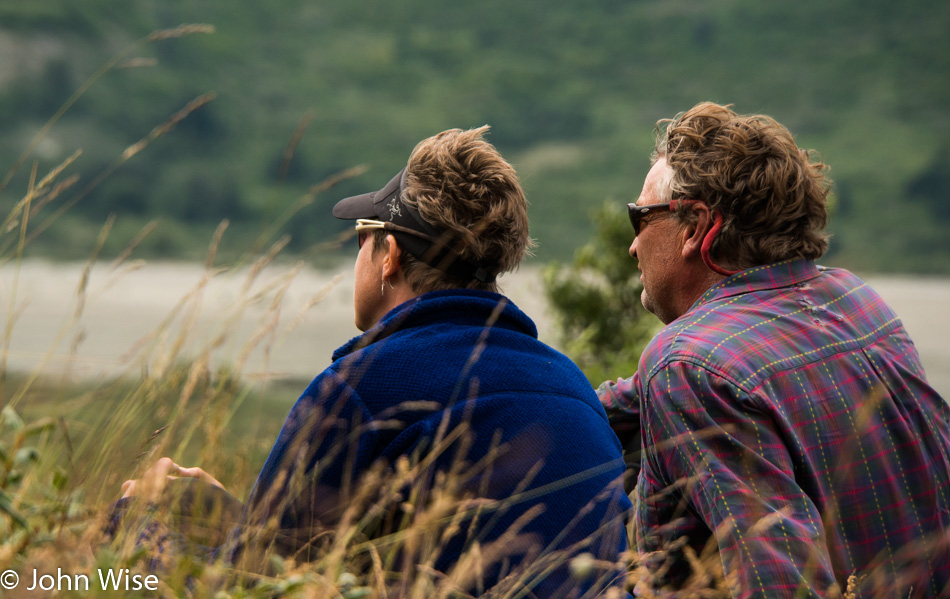
Our trip leader, Bruce Keller, with his partner Echo Miller, took a moment to relax and gaze upon Mount Blackadar.
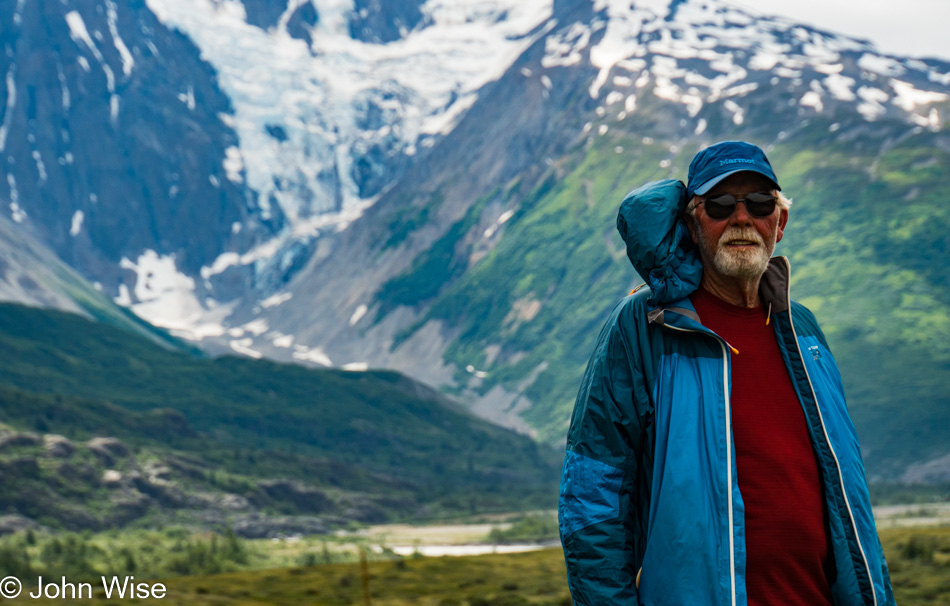
This was probably my favorite photo of Frank “First Light” Kozyn I shot. Here he is in front of Mount Blackadar. This mountain must have some important history, as I keep pointing it out; read on.
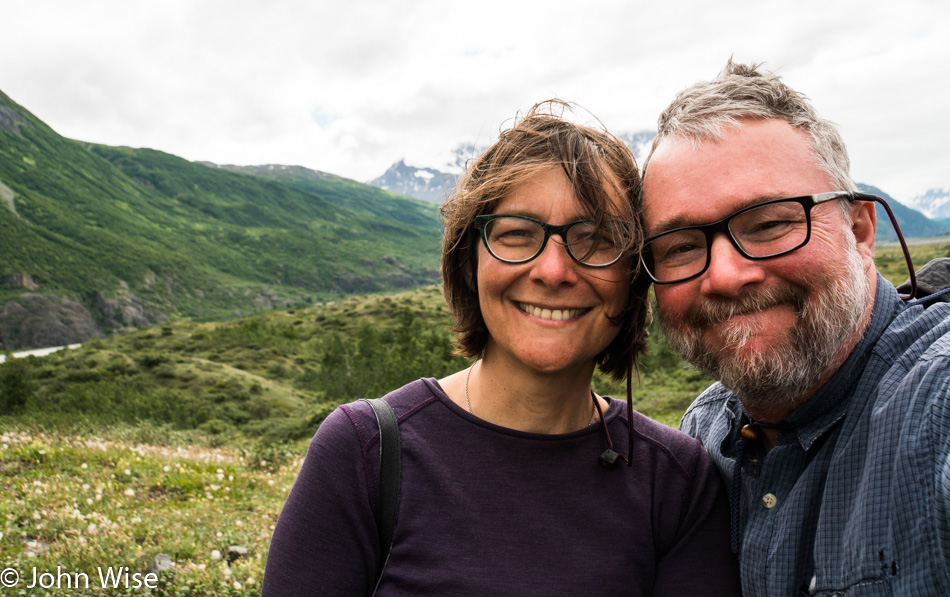
Caroline and I, with our fat heads, blocked the view of Mount Blackadar behind us. Mount Blackadar was named after Dr. Walt Blackadar, who first kayaked Turn Back Canyon on the other side of this mountain back in 1971 at the age of 49. That solo journey, which has been compared in significance to the first ascent of Mt. Everest, earned him the respect to have the mountain standing sentinel to Turn Back Canyon named after him. Like so many other river adventurers who risked their lives to see and experience a thing, he became a vocal proponent for the protection of our riverways.
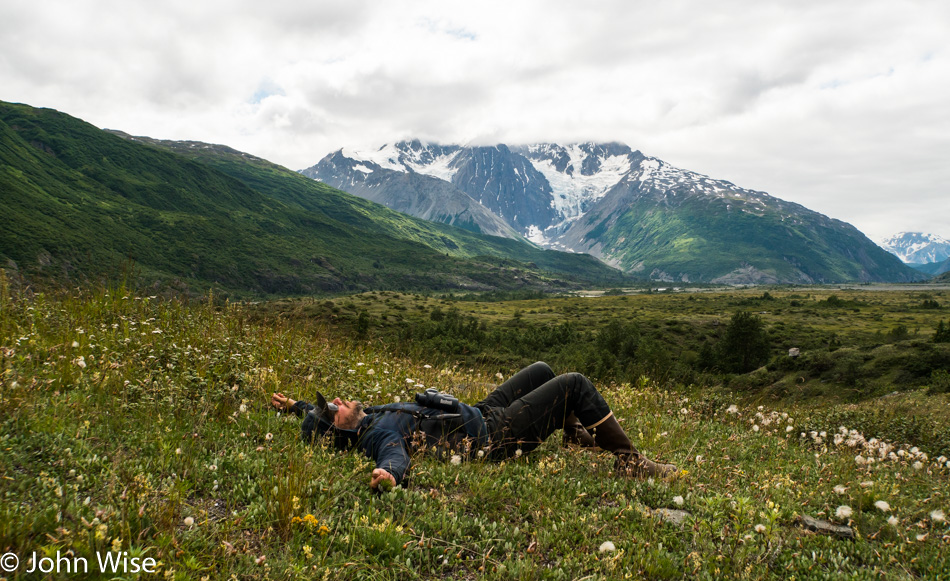
This is our boatman Pauly Borichevsky chilling in front of you-know-which mountain.
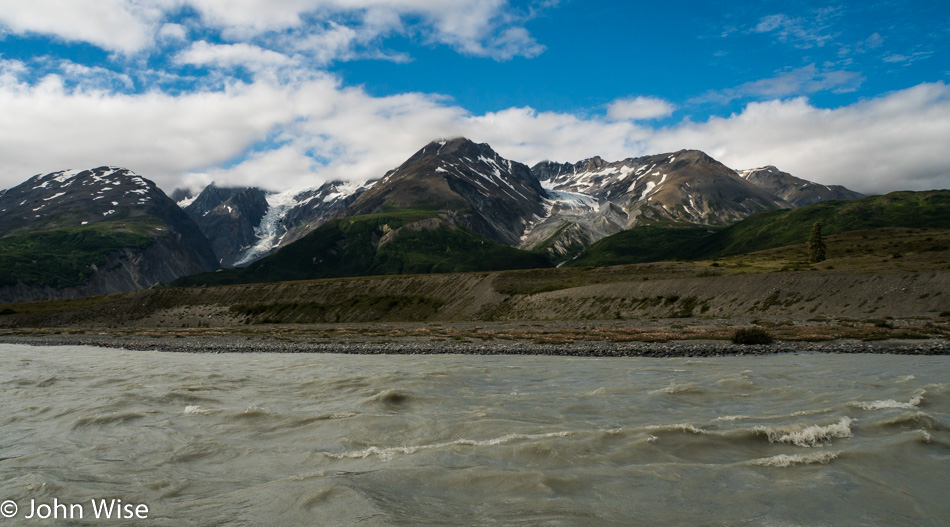
You know that mountain that looked so close? You know, Mount Blackadar. Well, it was nearly two hours away, sure it looked like it might be 15 minutes away, but that is a trick due to the scale and magnitude of this landscape. On this leg of the river, we encounter an incredible number of “S” turns that have us constantly on the move staying away from where the water piles up against walls.
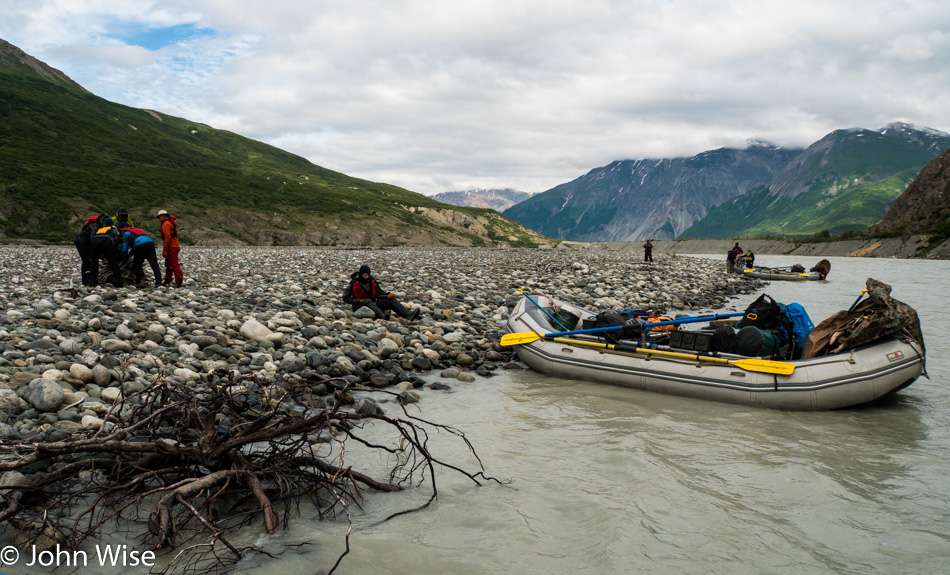
Collecting driftwood for our campfire later today. Firewood is essential for us as we use it to boil river water for washing dishes; it also makes for a toasty place to warm our cold feet. This collection is a bit different than other days as we need two days’ worth due to us staying on a layover in front of Tweedsmuir Glacier before our helicopter portage over Turn Back Canyon. While Dr. Blackadar survived a kayak run of this treacherous canyon, we would surely die if we attempted to run it in rafts.
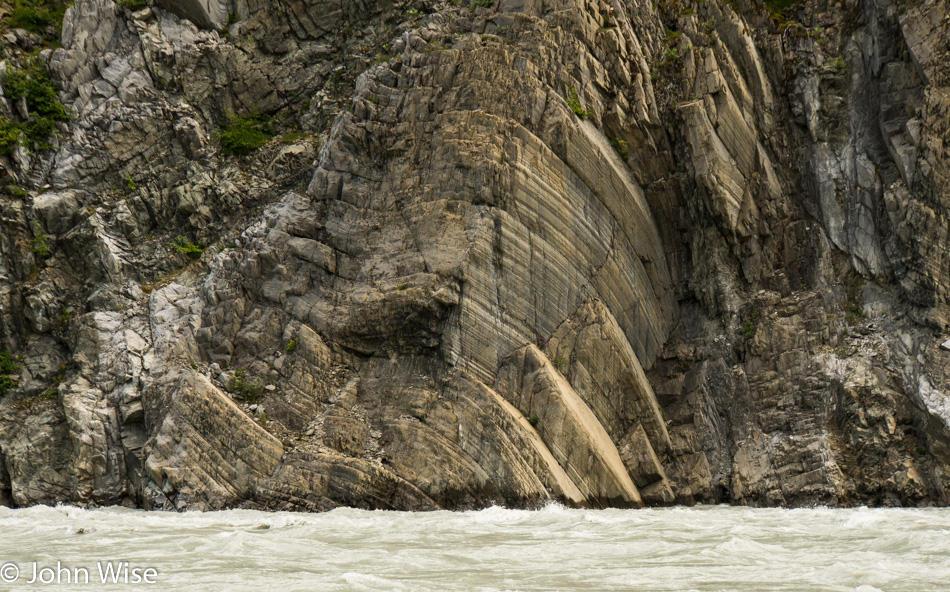
By now you may start wondering just how long can this blog entry be. Well, it’s only about 1,400 words so far, but I can’t help but share better photos I shot on this day. Out of 207 photos only 23 are being posted and how can I not when images like this are exemplary of the spectacular geology on display?
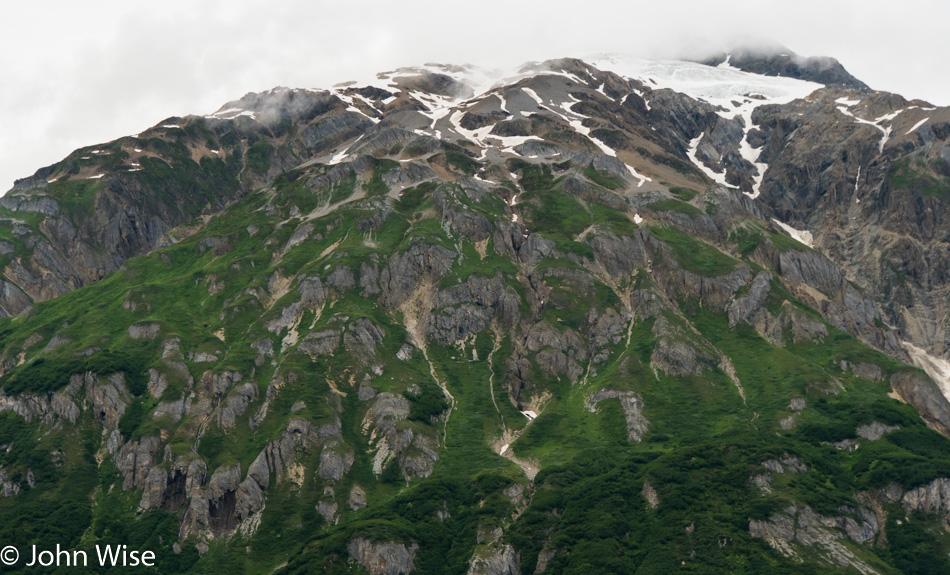
This could be one of the sides of Mount Blackadar, but my memory isn’t so good that I could be certain of this. Whatever it is, I found the patchwork of rock and green spots compelling enough that it had to join the batch of images being shared. It was also our last quick stop before making camp. This one was to collect fresh drinking water.
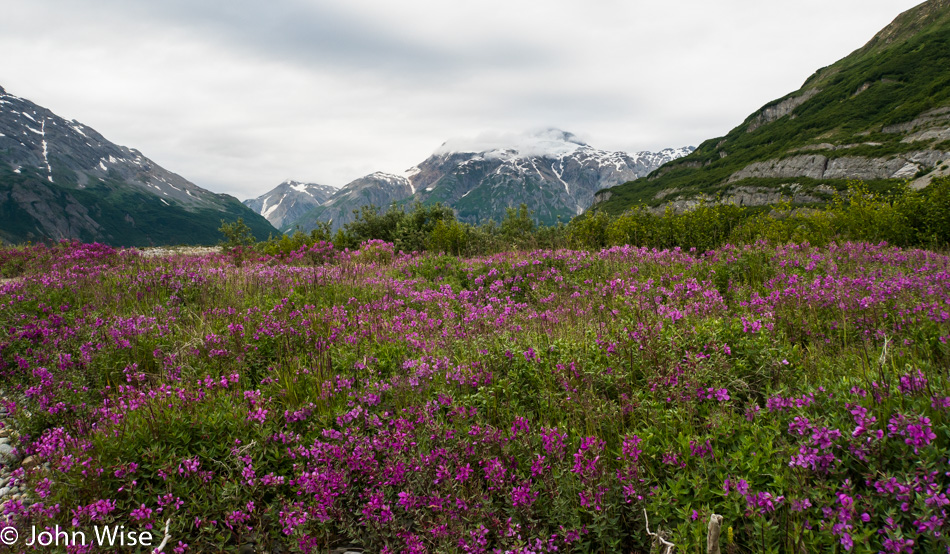
After we landed the rafts, I mean inflatable cruise ships, at our final stop of the day, we dragged them ashore and deflated them after removing everything else we were traveling with. One thing we couldn’t unload or deflate was the ever-present mosquitos. With no wind in sight, they hang out like grotty teenagers intent on bugging the shit out of you. Thirsty assures us that this is nothing compared to what’s up in the Arctic, somehow I’m not feeling so much better. A late chat into near darkness with Pauly, Thirsty, Keith, Caroline, and I was a great elixir that delivered us to sleep that night.
